Every iPad model listed in order: How many generations of iPads are there?
If you are looking to dive into the world of iPads or you'd like to upgrade yours, looking at the different iPad generations in order can give you a new level of insight. I did it to create this guide, and it's a fascinating look at how technology has evolved, and Apple continues to push the limits of innovation.
If you want to see how far we've come, walk with me. I'll guide you through all iPad generations, from the first iPad release date to the latest.
Every iPad release in order
For a quick overview of the different iPad versions, here’s a look at the models and their release dates:
| iPad model | Release date |
| iPad 1st generation | April 3, 2010 |
| iPad 2 | March 11, 2011 |
| iPad 3rd generation | March 16, 2012 |
| iPad 4th generation | November 2, 2012 |
| iPad Mini 1 (1st generation) | November 2, 2012 |
| iPad Air (1st generation) | November 1, 2013 |
| iPad mini 2 | November 12, 2013 |
| iPad Air 2 (2nd generation) | October 22, 2014 |
| iPad mini 3 | October 22, 2014 |
| iPad mini 4 | September 9, 2015 |
| iPad Pro (1st generation) | November 11, 2015 |
| iPad (5th generation) | March 24, 2017 |
| iPad Pro (2nd generation) | June 13, 2017 |
| iPad (6th generation) | March 27, 2018 |
| iPad Pro (3rd generation) | November 7, 2018 |
| iPad mini (5th generation) | March 18, 2019 |
| iPad Air (3rd generation) | March 18, 2019 |
| iPad (7th generation) | September 25, 2019 |
| iPad Pro (4th generation) | March 25, 2020 |
| iPad (8th generation) | September 18, 2020 |
| iPad Air (4th generation) | October 23, 2020 |
| iPad Pro (5th generation) | May 21, 2021 |
| iPad (9th generation) | September 24, 2021 |
| iPad mini (6th generation) | September 24, 2021 |
| iPad Air (5th generation) | March 18, 2022 |
| iPad (10th generation) | October 26, 2022 |
| iPad Pro (6th generation) | October 26, 2022 |
| iPad Air (6th generation) | May 15, 2024 |
| iPad Pro (7th generation) | May 15, 2024 |
| iPad mini (7th generation) | October 23, 2024 |
| iPad (11th generation) | March 12, 2025 |
| iPad Air (7th generation) | March 12, 2025 |
| iPad Pro M5 (8th generation) | Expected in October 2025 |
iPad 1st generation
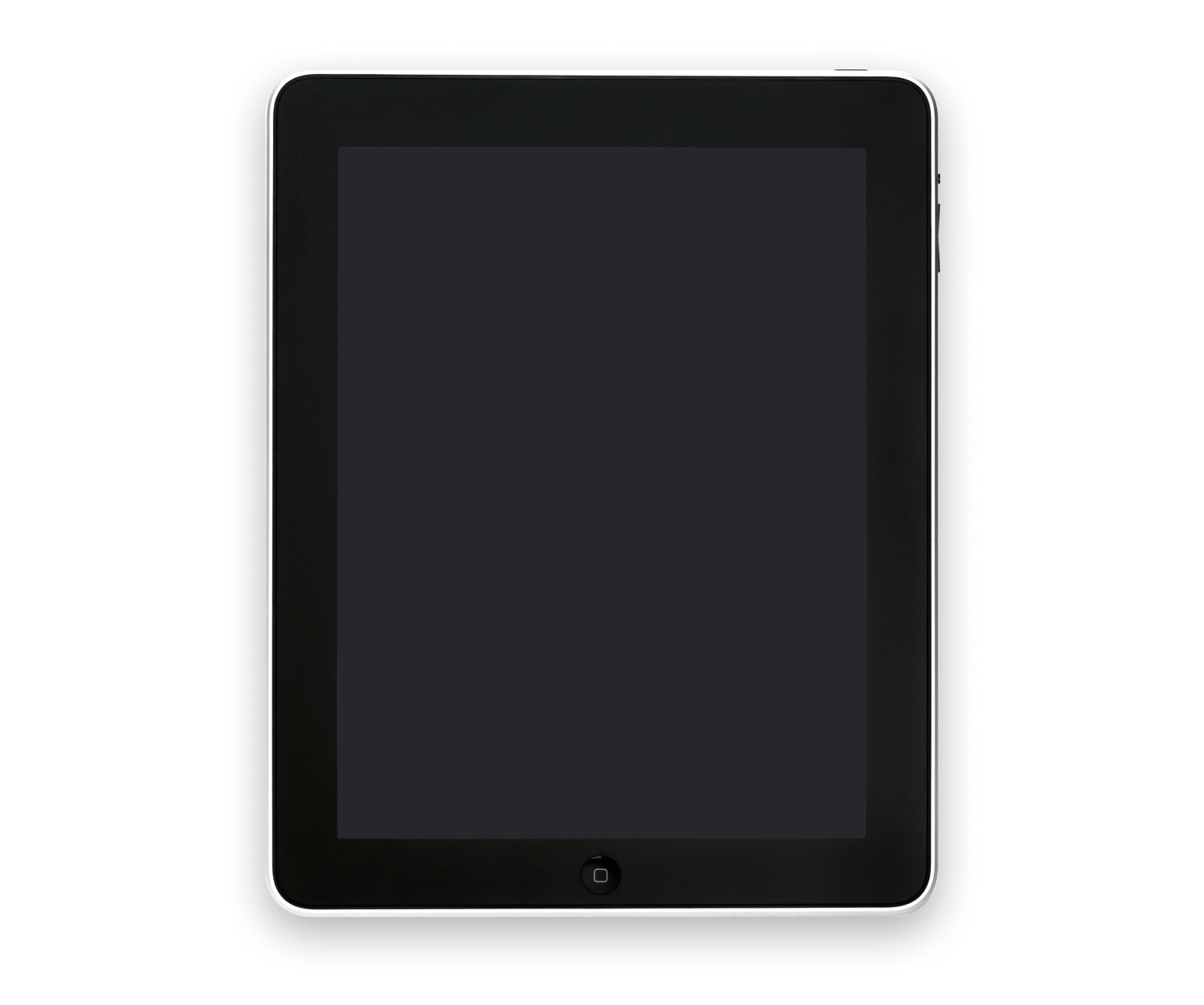
Apple had already given us iPhones and MacBooks when it decided to bridge the gap between the two. And as a person who had used both devices, I was intrigued to see what the in-betweener could do.
In April 2010, we got the iPad, a device that combined the portability of a smartphone with the bigger screen of a laptop. It had a 9.7" display and the Apple A4 chip, and it introduced a new idea of what a personal device could do. It was quite an exciting release.
iPad 1 ran on iPhone's iOS.
Major details:
- Display: 9.7-inch LED-backlit display with 1024 x 768 resolution
- Chip: Apple A4 chip
- Storage: 16GB, 32GB, and 64GB options.
- Cameras: None. For this release, the focus was more on media consumption and productivity.
- Connectivity: 30-pin dock connector, Wi-Fi, and optional 3G (on cellular models)
iPad milestones:
- The iPad established a new market by lying somewhere between a laptop and a smartphone.
- It expanded the Apple ecosystem.
- The iPad became a popular device for media consumption, especially reading eBooks.
This model laid the foundation for the modern tablet era.
iPad 2
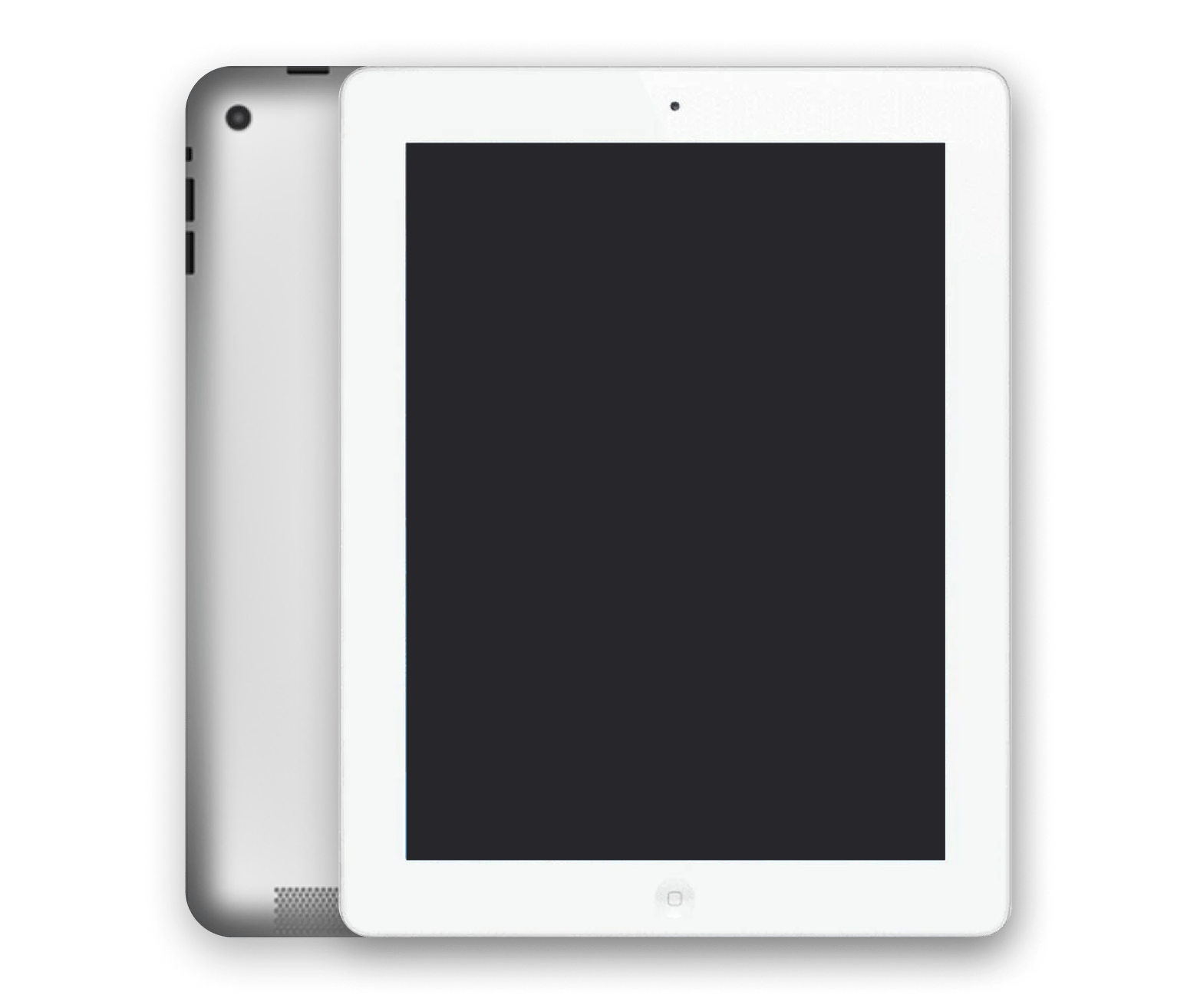
While the industry was still scrambling to copy the iPad 1, Apple brought the 2nd gen in 2011. It now came with cameras for the first time, with a front VGA camera and a 0.7-megapixel rear camera that could record videos.
The size was the same as the first iPad, but it came with a new design that made it 33% thinner and up to 15% lighter than the original iPad. Apple also brought a more powerful dual-core A5 chip, making it possible to work with demanding apps and play more powerful games.
Major details:
- Display: 9.7-inch LED-backlit display with 1024 x 768 resolution
- Chip: A5 chip
- Storage: 16GB, 32GB, and 64GB options
- Cameras: Front VGA camera and rear 0.7MP camera
- Connectivity: 30-pin dock connector, Wi-Fi, and optional 3G
Updates & upgrades:
- Improved design: 33% thinner and up to 15% lighter than the original
- Dual cameras: Front and rear cameras
- Performance boost: A5 chip to double the processing power
iPad milestones:
- The iPad 2 brought FaceTime to the tablet.
- Since it was much thinner and lighter, people could now carry the iPad around comfortably.
The iPad 2 solidified the iPad's place in homes, schools, and businesses.
Check out: iPad serial number lookup (free online tool) or iPad serial number lookup (a free GPT assistant) to reveal every key detail about your device — including its tech specs, production date, model, warranty, and more.
iPad 3rd generation
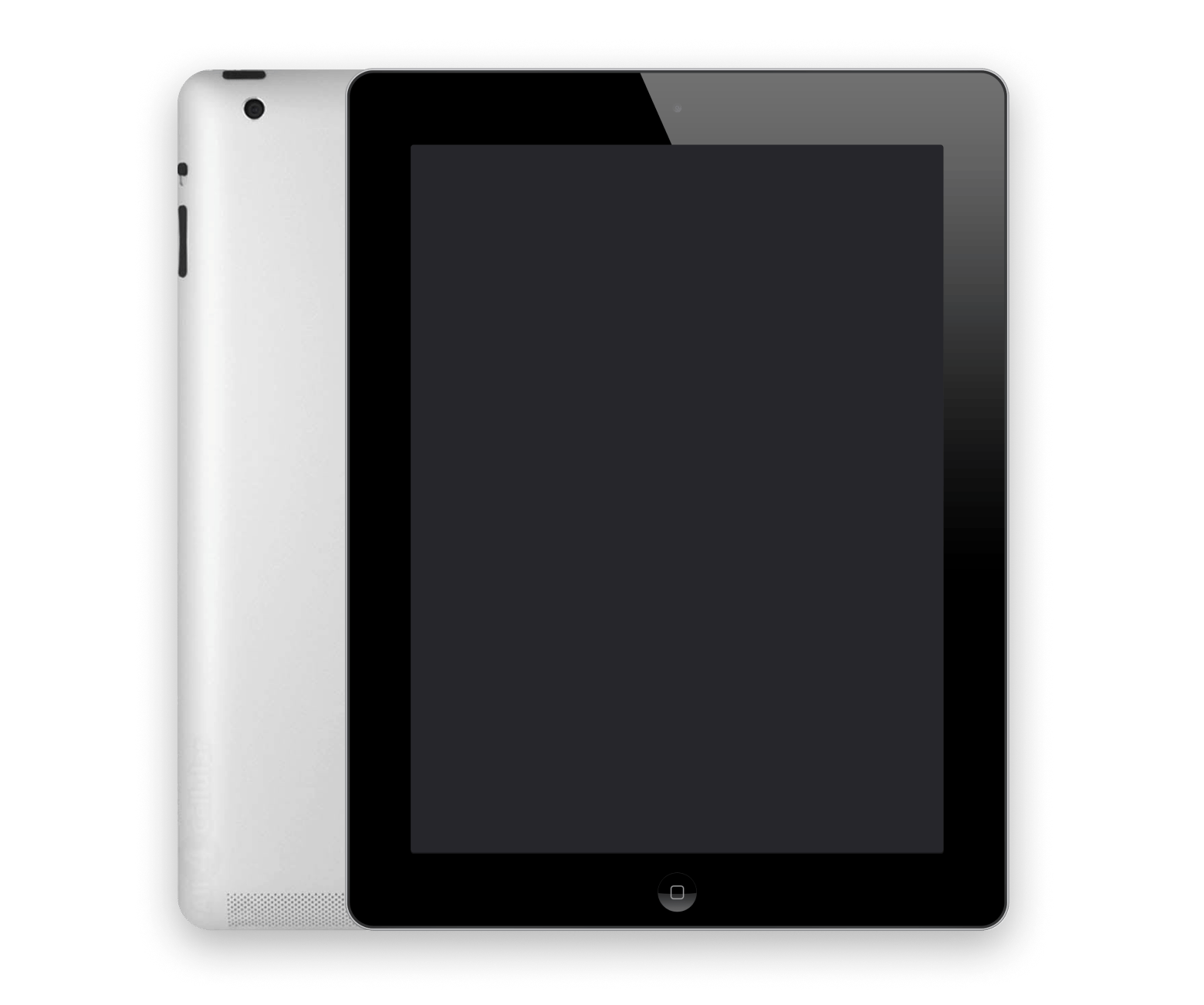
The 2012 iPad is often referred to as the "iPad with Retina Display," as it's the one that brought the technology to the lineup. This gave it a high resolution, making text crisper and colors much brighter.
The tablet wasn't redesigned but came with a souped-up version of the A5 chip, which had a quad-core GPU. The back camera could now take 1080p videos, and the cellular models now supported LTE (4G).
Major details:
- Display: 9.7-inch Retina Display with 2048 x 1536 resolution
- Chip: A5X chip
- Storage: 16GB, 32GB, and 64GB options
- Cameras: 5MP rear camera (with 1080p video recording) and VGA front camera
- Connectivity: 30-pin dock connector, Wi-Fi, and optional 4G LTE (on cellular models)
Updates & upgrades:
- Retina display: Quadrupled the pixel count of iPad 2
- Enhanced graphics: The A5X chip with a quad-core GPU to handle the higher demands of the Retina display
- Improved camera: 5MP rear camera with 1080p video recording
- 4G LTE support: For the first time, the iPad (cellular models) supported 4G LTE
iPad milestones:
- The Retina technology was now on the iPads after coming to iPhones in 2010.
- The iPad camera could now record 1080p videos.
The iPad 3 was getting a ton of love from users, and I totally get it:
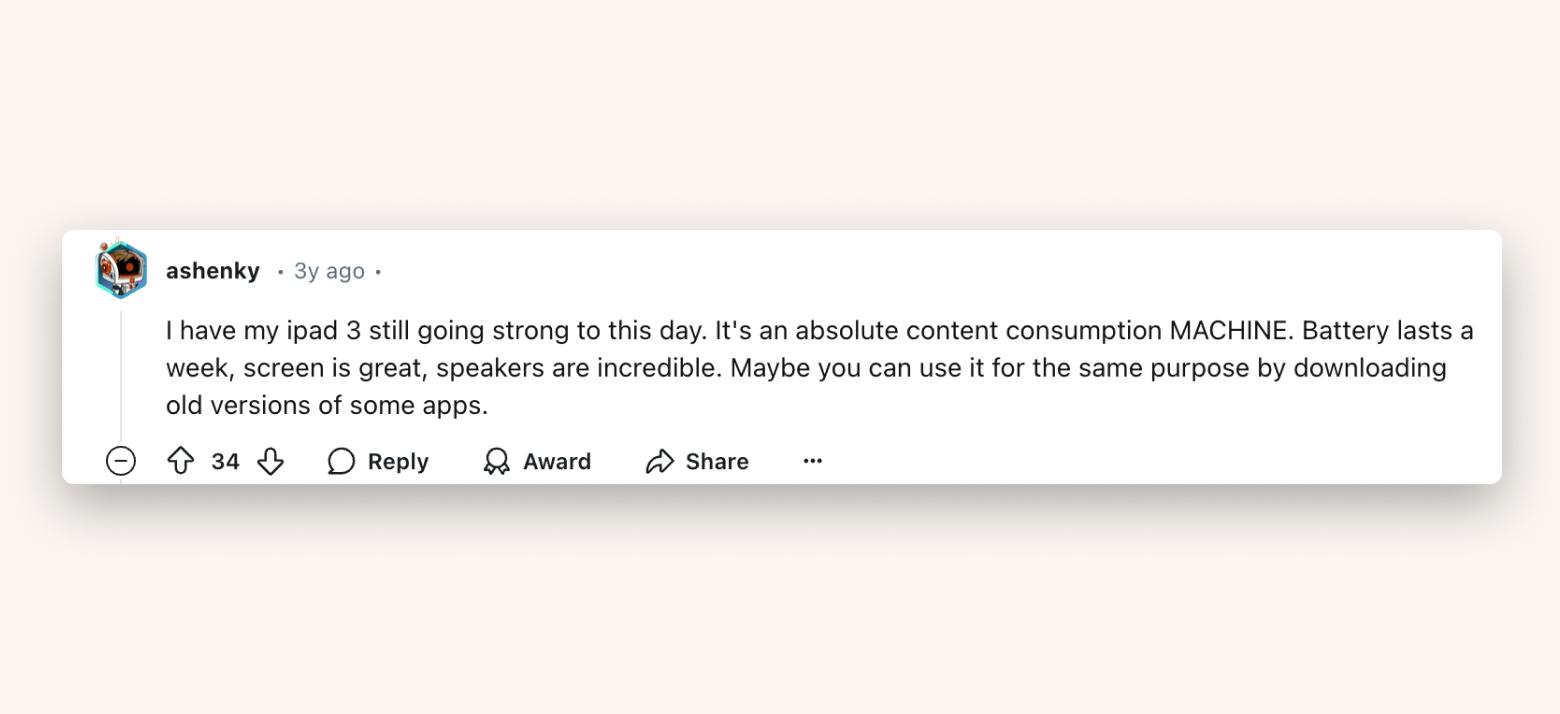
Image source: https://www.reddit.com/r/ipad/...
The advanced graphics of the Retina display and a quad-core GPU made the iPad an even more suitable device for creatives and other professionals.
iPad 4th generation
Just a few months after the iPad 3, Apple brought the 4th gen model. It marked a significant shift from the 30-pin connector to the Lightning, something I found quite exciting as it was now compatible with my iPhone charger. The tablet came with a new A6X chipset, which was much faster and didn't make the iPad hot. The front camera was also upgraded to 1.2 megapixels.
Major details:
- Display: 9.7-inch Retina Display, 2048 x 1536 resolution
- Chip: Apple A6X chip, twice faster and much cooler than A5X
- Storage: 16GB, 32GB, 64GB, and 128GB options
- Cameras: 5MP rear camera, 1.2MP front camera
- Connectivity: Lightning connector, Wi-Fi, and optional 4G LTE (on cellular models)
Updates & upgrades:
- New lightning connector: Replaced the older 30-pin dock connector
- FaceTime HD: Front VGA camera upgraded to a 1.2MP camera
- Expanded storage: 128GB storage option to cater to users who deal with larger media libraries
iPad milestones:
- While the iPad 3 could overheat while multitasking, the A6X on iPad 4 sorted this issue.
- The release marked the transition to the Lighting connector used on iPhones.
Although it wasn't a dramatic redesign, the iPad 4 was a crucial step forward in technology and compatibility.
iPad mini 1 (1st generation)
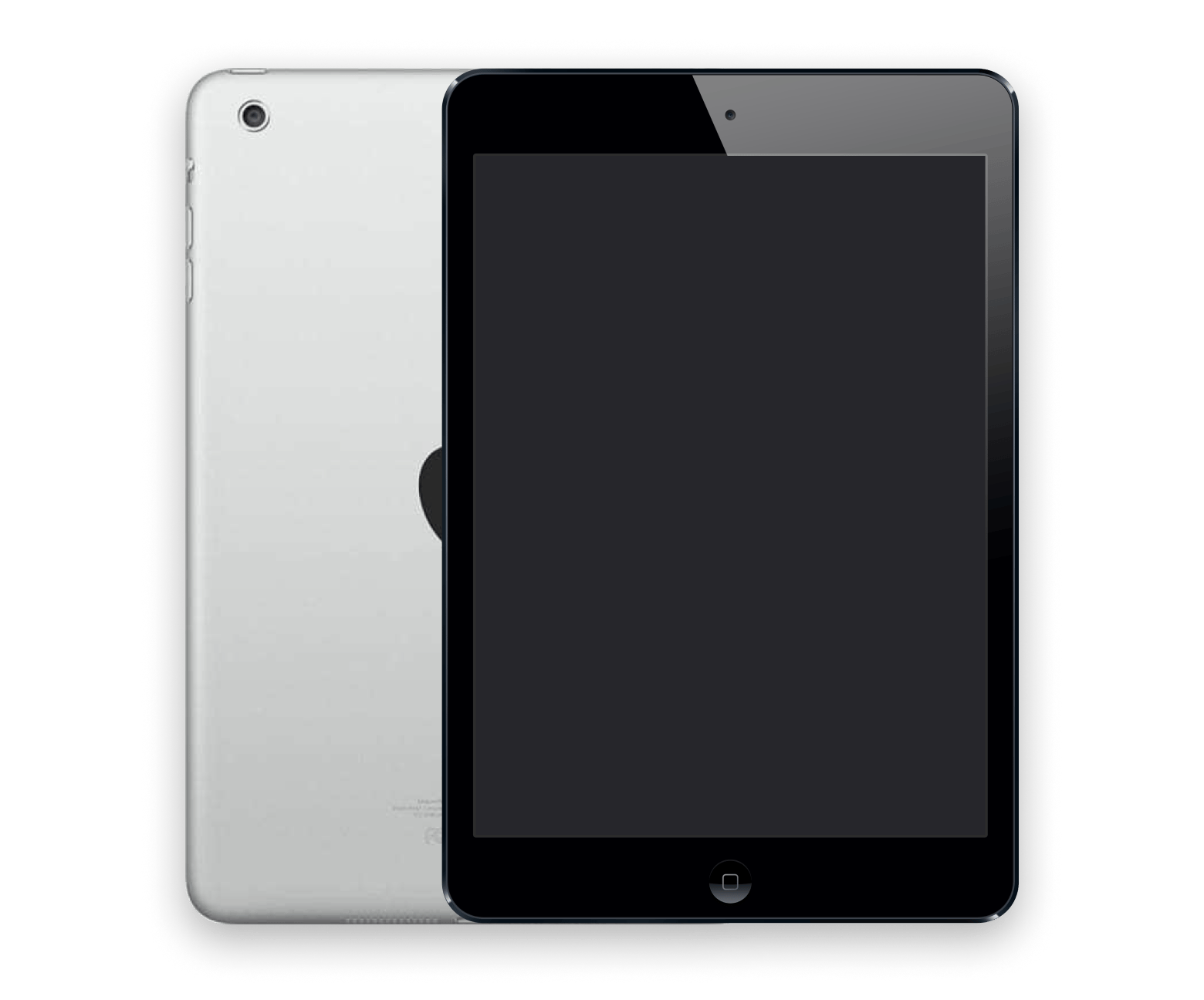
On the same launch, Apple introduced a new iPad lineup — iPad mini. It was a smaller version with a 7.9" inch display (compared to 9.7" for the iPad), 23 percent thinner, and 53 percent lighter than the 3rd-gen iPad. This was a great iPad alternative for those who liked to read while traveling or simply wanted to carry their iPads around.
Major details:
- Display: 7.9-inch LED-backlit display, 1024 x 768 resolution
- Chip: Apple A5 chip
- Storage: 16GB, 32GB, and 64GB options
- Cameras: 5MP rear camera 1.2MP front camera
- Connectivity: Lightning connector, Wi-Fi, and optional 4G LTE
Updates & upgrades:
- New form factor: Smaller, thinner, and lighter model
- New Lightning connector: Dropped the 30-pin dock connector for the Lightning connector
- FaceTime HD: 1.2MP camera to replace the old VGA front camera
iPad milestones:
- It expanded the Apple ecosystem and catered to those who wanted a smaller or more affordable iPad.
- Its small size and weight made the iPad a good traveling companion.
This is what users felt about the iPad Mini back them:
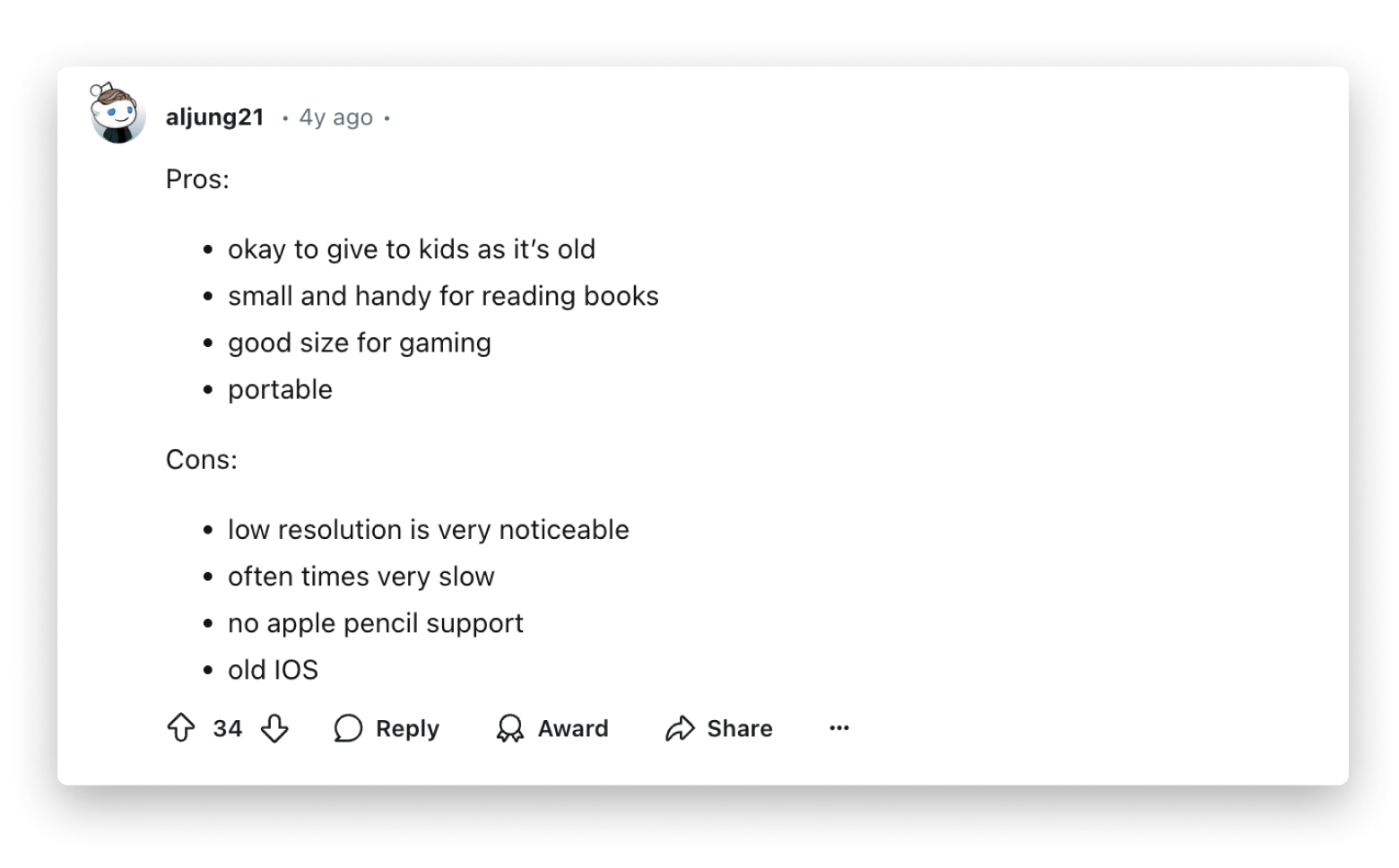
Image source: https://www.reddit.com/r/ipad/...
The Mini was a great addition that reached a new market.
iPad Air (1st generation)
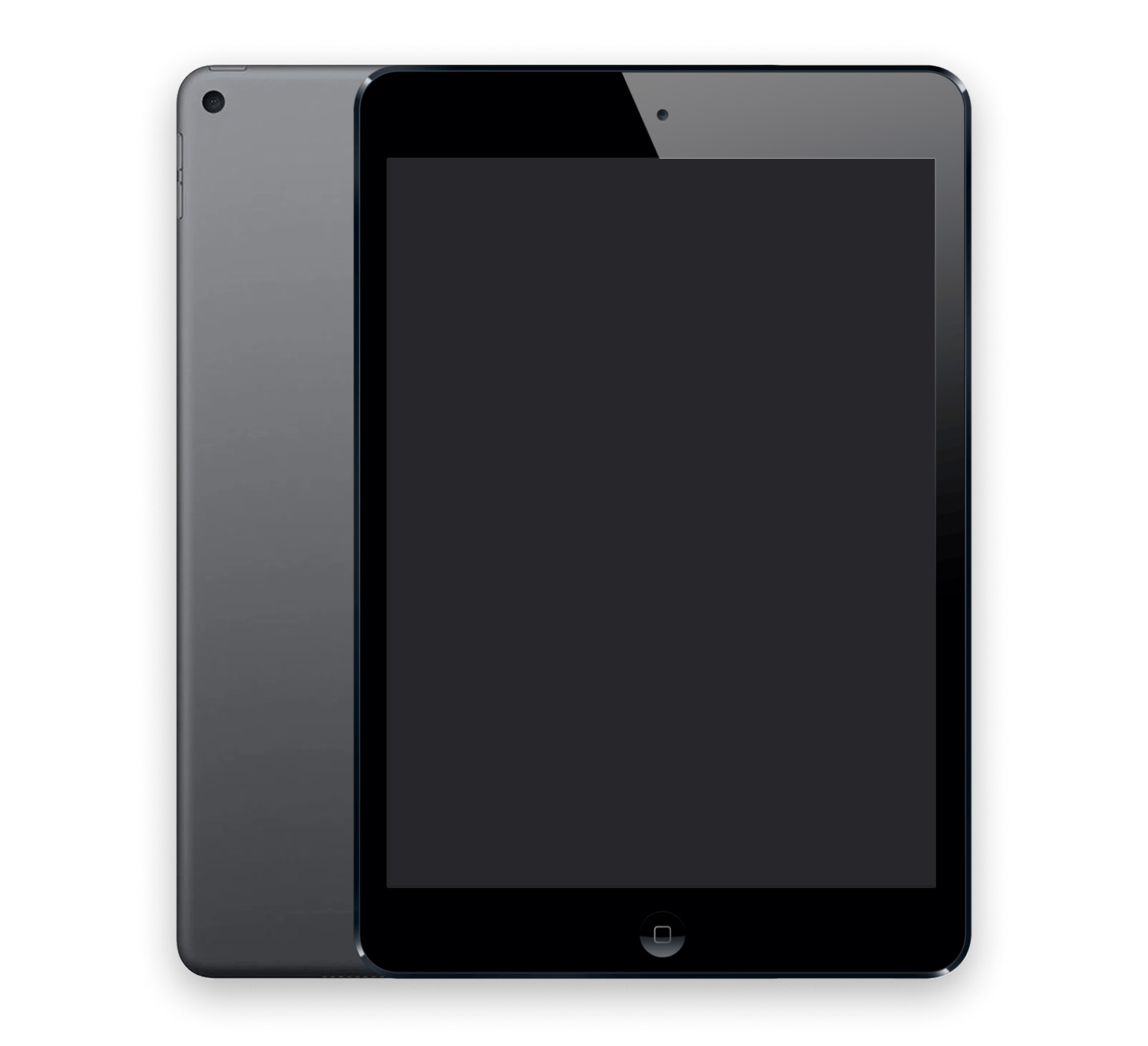
Released in November 2021, this was another new take on the iPad. The MacBook Air inspired it and came with the same design principles — elegant, thin, and light. The display remained the same as the iPad, but I found the overall design to be much better, and the device was more portable. It was the first iPad with a 64-bit chip.
Major details:
- Display: 9.7-inch Retina Display, 2048 x 1536 resolution
- Chip: Apple A7 chip with a new 64-bit architecture
- Storage: 16GB, 32GB, 64GB, and 128GB options
- Cameras: 5MP rear camera, 1.2MP front camera
- Connectivity: Lightning connector, Wi-Fi, and optional 4G LTE
Updates & upgrades:
- A super-light design: 20% thinner and 28% lighter than the iPad 4
- 64-Bit Architecture: Could now handle more complex apps and tasks efficiently
iPad milestones:
- This was the first "Air" model, and it showed Apple's shift to focus on lightness and thinness.
- Using a 64-bit chip on an iPad helped bridge the processing gap between tablets and laptops.
For those who felt the iPad Mini was not powerful enough, there was now a portable but still powerful option.
iPad mini 2

A few days after the iPad Air, Apple brought the 2nd gen iPad mini. The first one used an older chip than its iPad counterpart, but this one was on par with the iPad Mini. It used the A7 chip to address several performance and visual issues (it now had a Retina display). The overall design remained the same as the 1st gen.
Major details:
- Display: 7.9-inch Retina Display, 2048 x 1536 resolution
- Chip: Apple A7 chip with 64-bit architecture
- Storage: 16GB, 32GB, 64GB, and 128GB options
- Cameras: 5MP rear camera, 1.2MP front camera
- Connectivity: Lightning connector, Wi-Fi, and optional 4G LTE
Updates & upgrades:
- Retina display: Mini got a Retina display
- A7 chip: An upgrade from A5 to A7
iPad milestones:
- This was the first Mini with a Retina display.
- The 64-bit A7 chip made the iPad's power comparable to some laptops.
The 2013 release struck a superb balance between portability and performance.
iPad Air 2 (2nd generation)
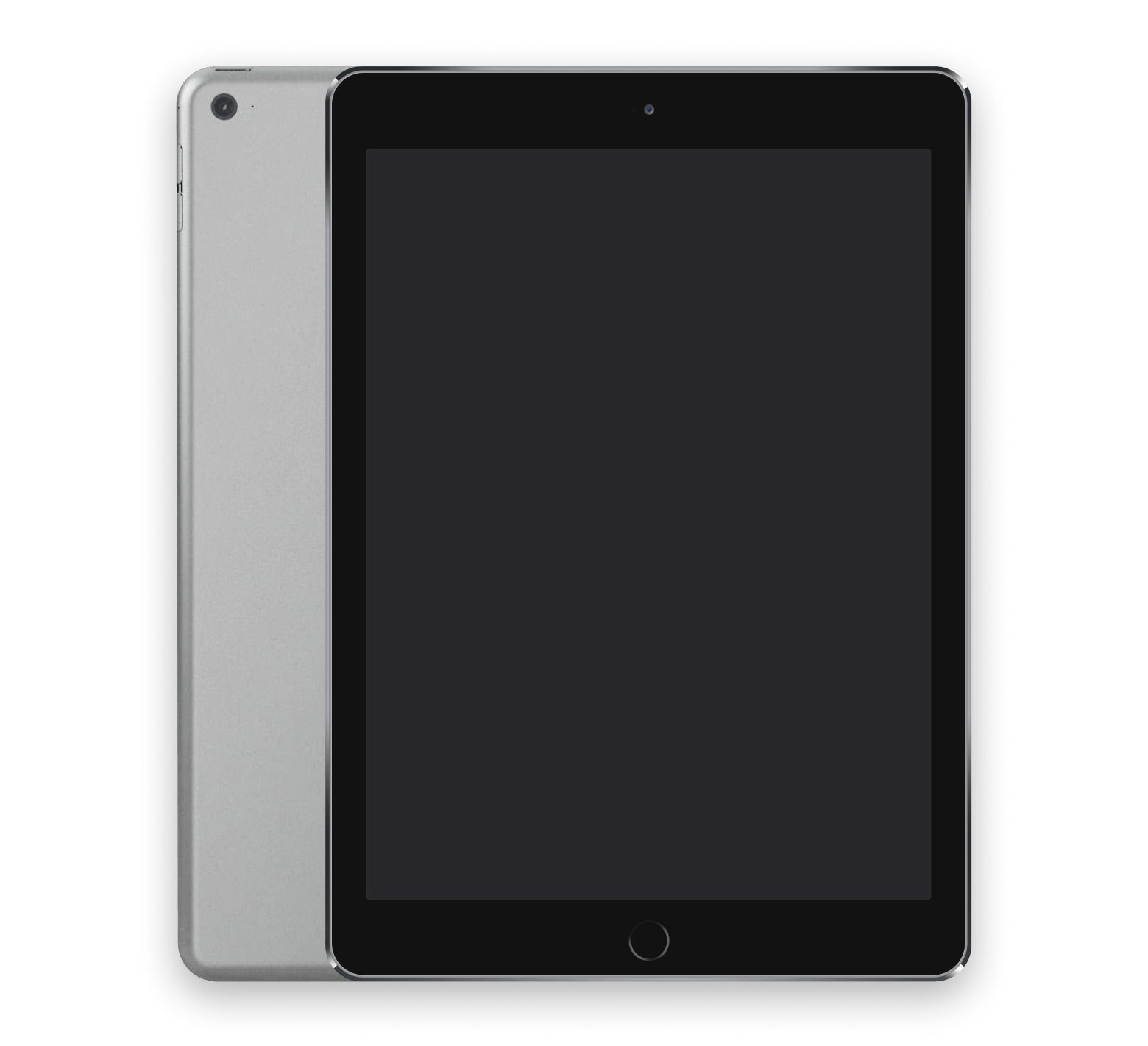
The iPad Air became even thinner and lighter in 2014 with the 2nd gen model. It also came with a much improved back camera, an 8MP one with slow-motion video capture and burst photos. This was also the first iPad to have Touch ID, significantly improving security and convenience. The mute button was dropped in this edition.
Major details:
- Display: 9.7-inch Retina Display, 2048 x 1536 resolution
- Chip: Apple A8X chip
- Storage: 16GB, 32GB, 64GB, and 128GB options
- Cameras: 8MP rear camera, 1.2MP front camera
- Connectivity: Lightning connector, Wi-Fi, and optional 4G LTE
Updates & upgrades:
- Touch ID: The fingerprint sensor for Apple.
- Better performance: A8X featured 40% CPU improvement and 2.5x faster GPU
- New laminated display: New anti-reflective coating for outdoor visibility
- New rear camera: The 8MP rear camera for burst mode and time-lapse video recording
iPad milestones:
- This was the first iPad with Touch ID.
- The Retina display was refined with an anti-reflective coating to make it more usable outdoors.
The iPad Air 2 was an excellent blend of aesthetics and power.
iPad mini 3
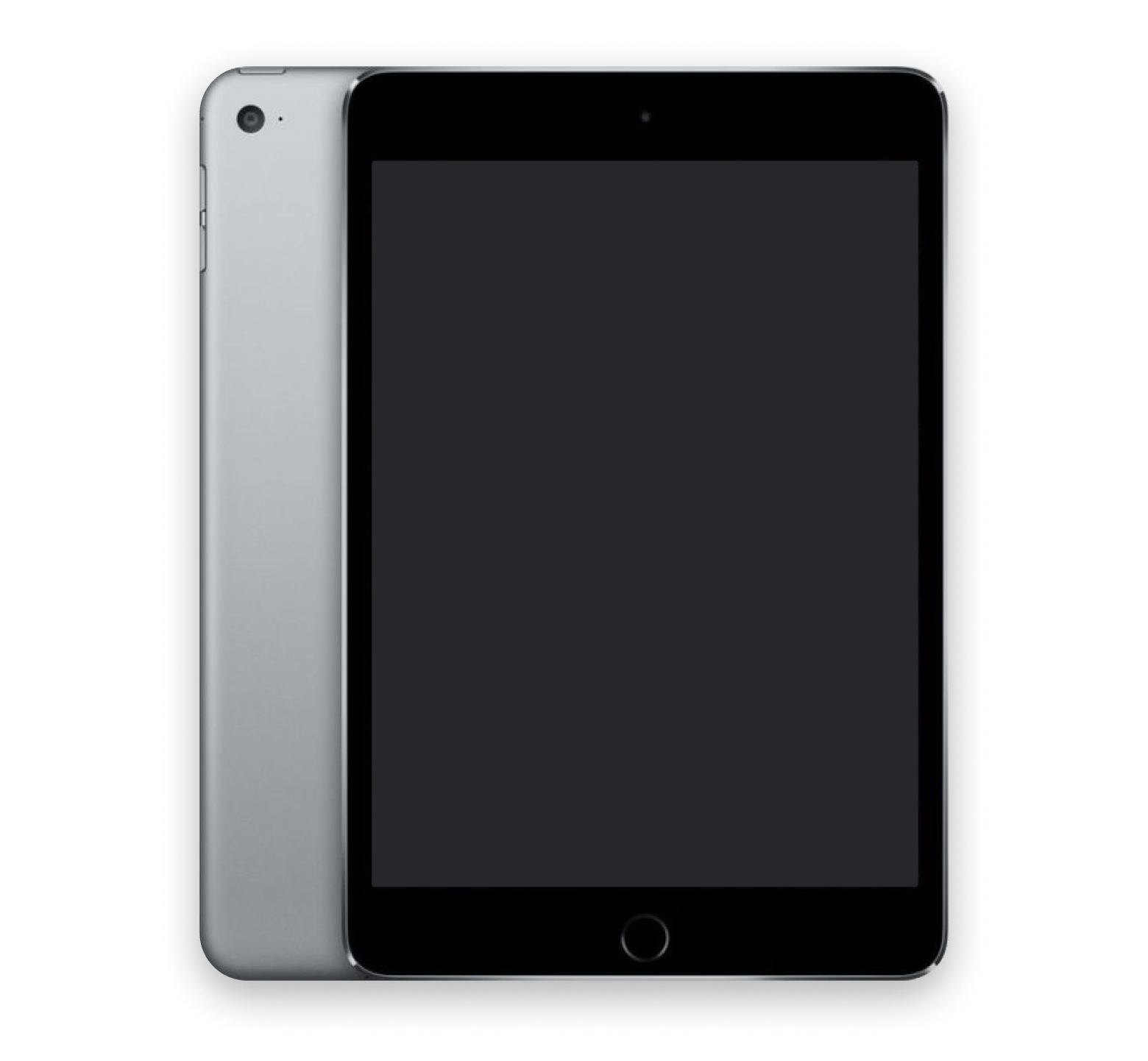
Unlike the iPad Air, which was released on the same day, Apple got lazy with this one. It came with the same design and chip as the 2nd gen, with the only update being the Touch ID.
Major details:
- Display: 7.9-inch Retina Display with 2048 x 1536 resolution
- Chip: Apple A7 chip
- Storage: 16GB, 64GB, and 128GB options
- Cameras: 5MP rear camera, 1.2MP front camera
- Connectivity: Lightning connector, Wi-Fi, and optional 4G LTE
Updates & upgrades:
- Touch ID: Unlock and pay with your fingerprint
- Gold color option: New gold finish to the silver and space gray options
iPad milestones:
- The Mini 3 was the first iPad (alongside the Air 2) to get Touch ID.
- For those looking for aesthetics, the gold color option brought a touch of luxury.
While it was still a decent upgrade, I didn’t find it as exciting as the previous releases.
iPad mini 4
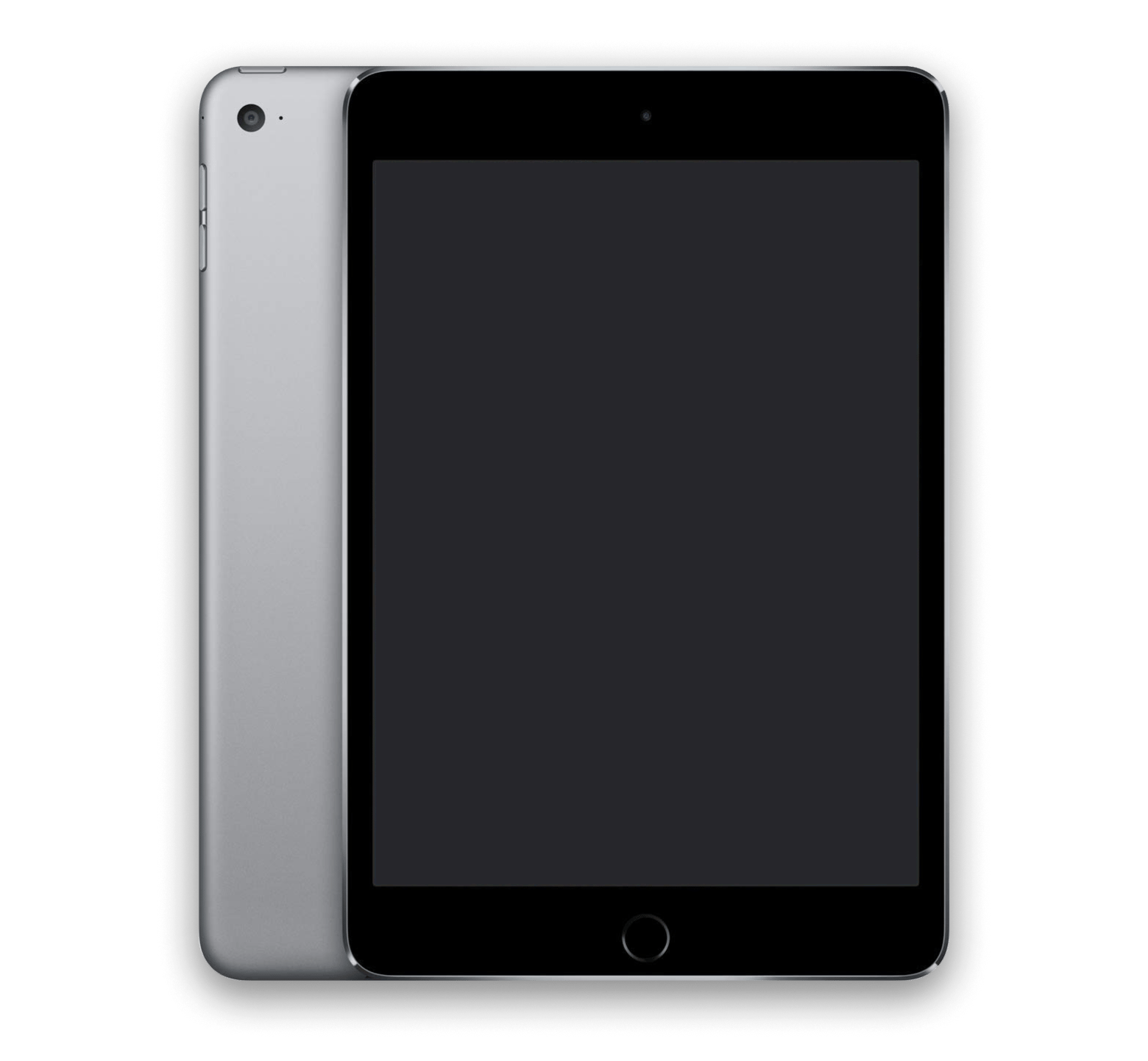
The 4th gen mini addressed the complaints of its predecessor in the 2015 release, offering a new design and better performance. Essentially, it got the updates of the iPad Air 2 – A8 processor, laminated display, and the 8MP rear camera.
Major details:
- Display: 7.9-inch Retina Display with 2048 x 1536 resolution
- Chip: Apple A8 chip
- Storage: 16GB, 32GB, 64GB, and 128GB options
- Cameras: 8MP rear camera and 1.2MP front camera
- Connectivity: Lightning connector, Wi-Fi, and optional 4G LTE
Updates & upgrades:
- Laminated display: Reduced glare and brought visuals closer to the screen
- New design: Sleeker, thinner, and lighter
- A8 Chip upgrade: Noticeable boost in performance
- Improved camera: 8MP rear camera with slow-motion videos and burst photos
iPad milestones:
- The laminated display set a new standard for clarity.
- Thinnest and lightest iPad Mini yet.
The iPad mini 4 was well-received after the iPad Mini 3 flopped.
iPad Pro (1st generation)
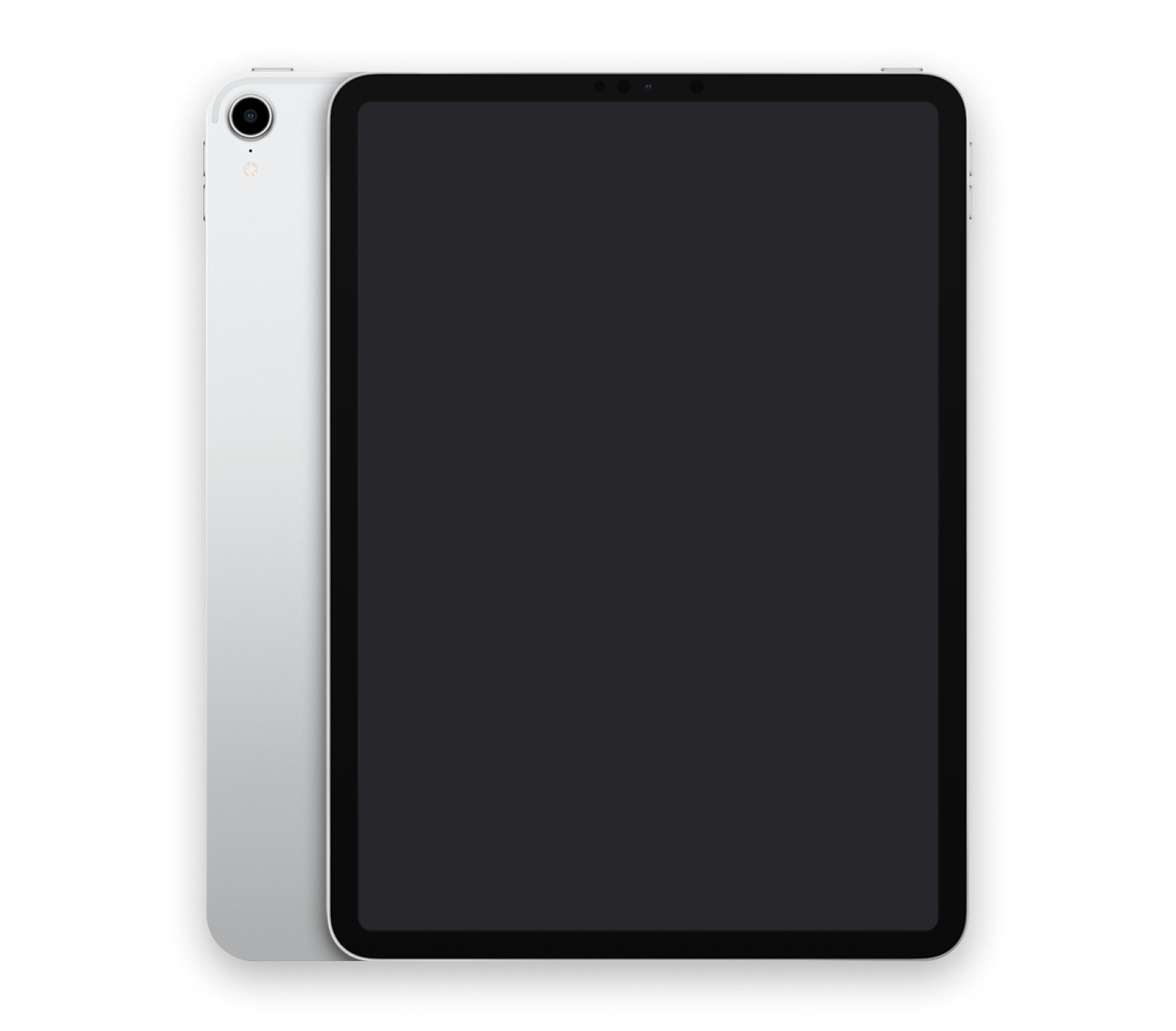
Apple decided to push the boundaries of what an iPad could do, and this was through an all-new iPad Pro in 2015. It came with a huge 12.9" display (plus a 9.7" version released in 2016) and a new A9X chip. It was meant to carve out a new niche, so Apple gave it some powerful extra features – an Apple Pencil and a Smart Keyboard.
Major details:
- Display: 12.9-inch, 2732 x 2048 resolution
- Chip: A9X chip
- Storage: 32GB, 128GB, and 256GB options
- Cameras: 8MP rear, 1.2MP front
- Connectivity: Lightning, Wi-Fi, optional 4G LTE
Updates & upgrades:
- Apple Pencil: Sketch and annotate directly on the screen
- Smart Keyboard: Turns the iPad into a portable workstation
- Four-speaker audio system: Better sound quality and audio output depending on adjustment on how you hold it
iPad milestones:
- This was the first “Pro” iPad, which created a new class of iPads geared toward power and professional use.
- This was the first iPad with Apple Pencil and Smart Keyboard.
As a power user, I was quick to snap it up, and it didn’t disappoint. Now, it’s been almost ten years, but this iPad still works like a Pro:

Image source: https://www.reddit.com/r/iPadP...
The iPad was now a tool, not just a device.
iPad (5th generation)
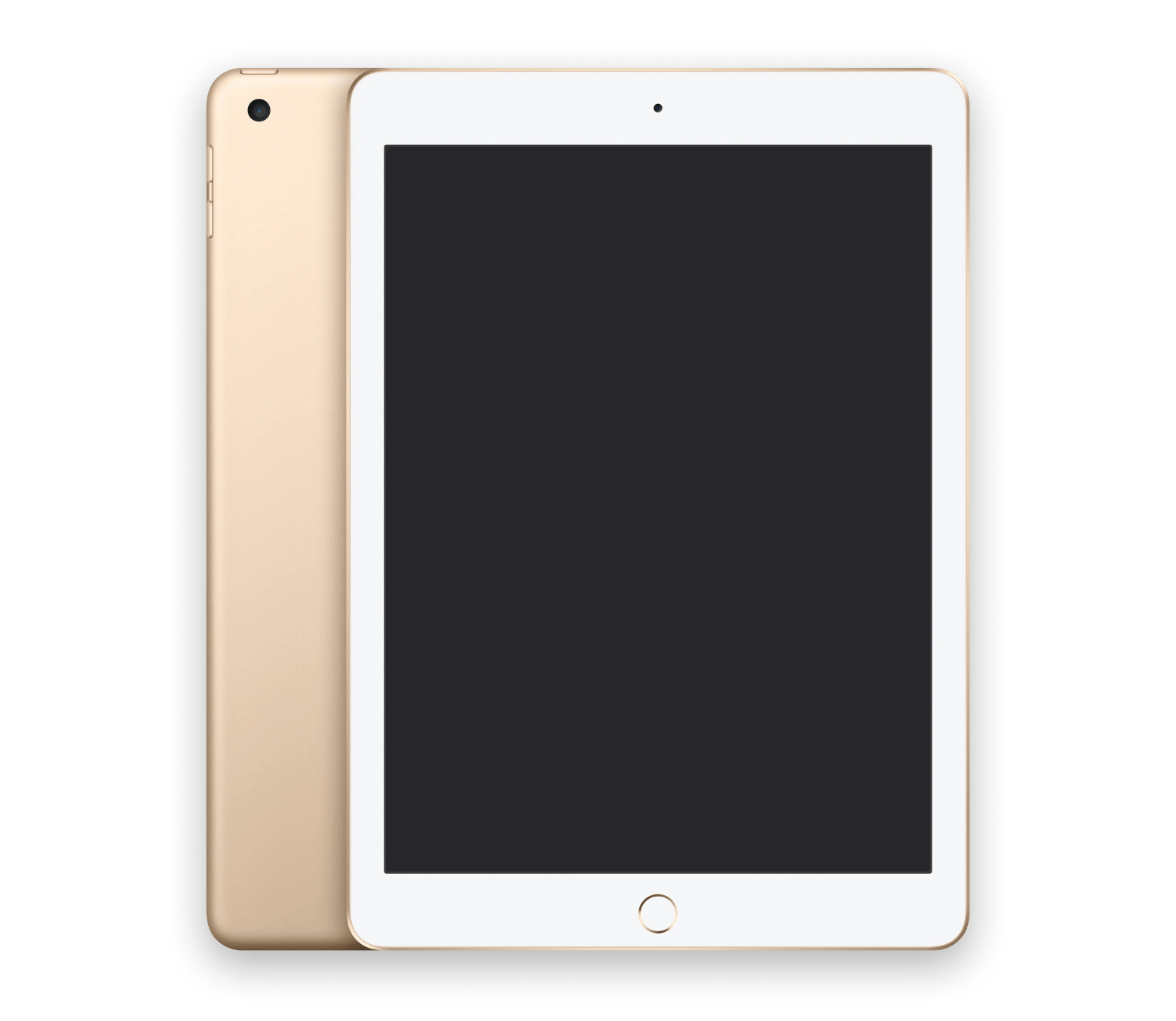
After 5 years and several new iPad lineups, the original one came back in 2017. Apple still wanted to keep things simple instead of focusing on either build or premium features. It came back as a budget option without the bells and whistles of the Pro, but it gave super performance with the A9 chip. The Retina display was brighter, although it was still unlaminated.
Major details:
- Display: 9.7-inch Retina display, 2048 x 1536 resolution
- Chip: A9 chip
- Storage: 32GB and 128GB options
- Cameras: 8MP rear camera, 1.2MP front camera
- Connectivity: Lightning, Wi-Fi, and optional 4G LTE
Updates & upgrades:
- Better camera: Camera was enhanced to 8MP (from 5MP) to match other models
- Touch ID: The iPad now comes with Touch ID
- Better performance: Moving from A6 to A9
- Bright Retina display: It was brighter and sharper
iPad milestones:
- After focusing on higher-end models, Apple finally bought back a budget option.
- The 5th gen iPad was more versatile than other models, so it catered to a larger market.
This model was more focused on being a solid, dependable iPad at a price that made it accessible to more people, especially students.
iPad Pro (2nd generation)
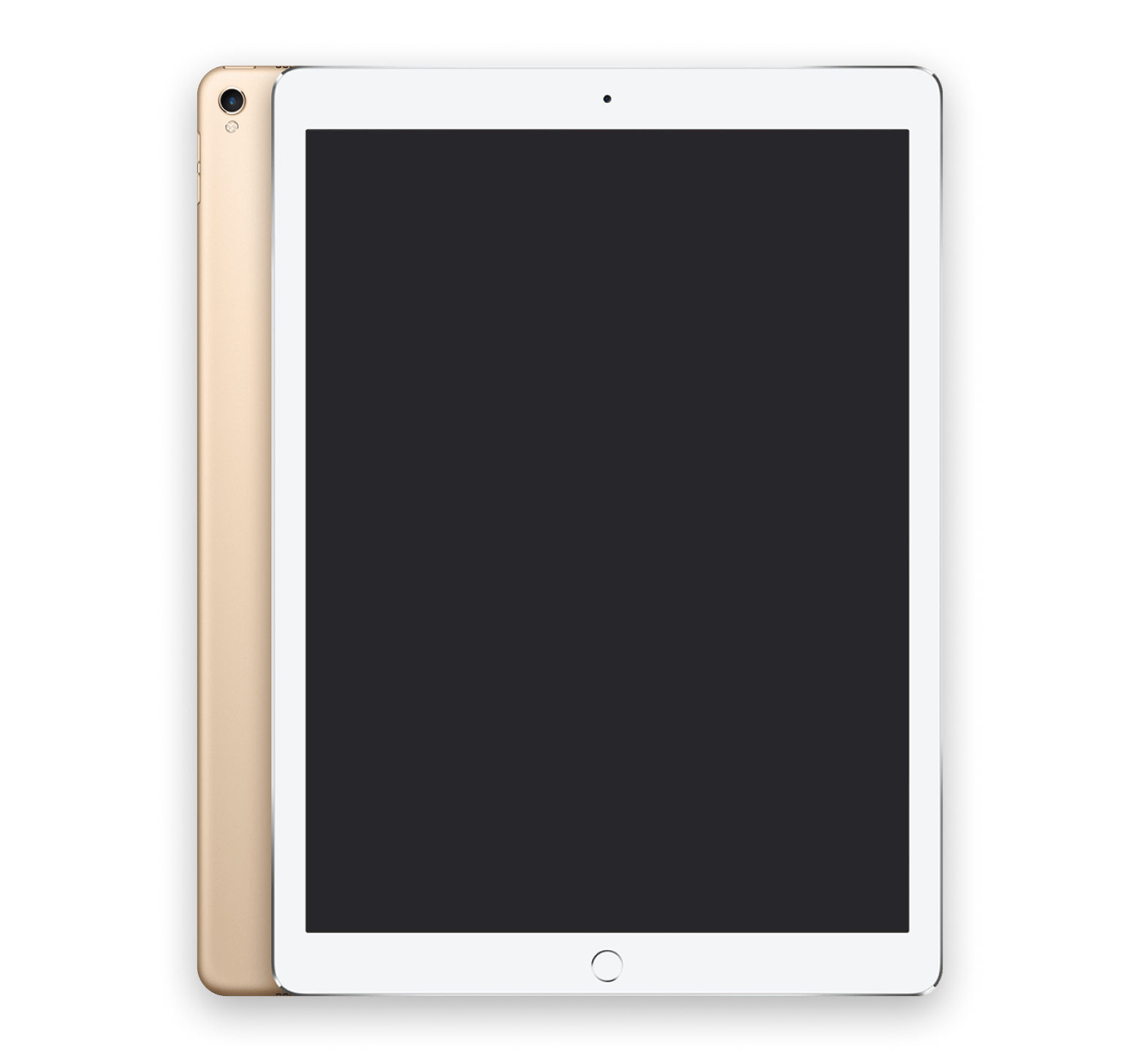
In 2017, a year after the first-generation iPad Pro, we got the second one. It now comes with a new A10X Fusion processor, increasing the raw performance. The rear camera was upgraded to 12MP and now has a True-Tone LED flash, with the front one moving from 1.2MP to 7MP.
But even with all that, the display was the biggest upgrade, as it now had ProMotion with a refresh rate of up to 120Hz.
Major details:
- Display: 10.5-inch (2224 x 1668 resolution) and 12.9-inch (2732 x 2048 resolution)
- Chip: A10X Fusion chip
- Storage: 64GB, 256GB, and 512GB options
- Cameras: 12MP rear and 7MP front camera
- Connectivity: Lightning, Smart Connector, Wi-Fi, optional 4G LTE
Updates & upgrades:
- ProMotion technology: 120Hz refresh rate, making everything smooth and responsive
- A10X Fusion chip: 30% faster CPU and 40% faster graphics performance
- Improved cameras: 12-MP rear and 7MP front camera
iPad milestones:
- The new 120Hz refresh rate set a new standard for tablet displays.
- If the 9.7" was too small and the 12.9" too big, the 10.5" was now the sweet spot.
The 2nd gen cemented the iPad Pro as a serious alternative to traditional laptops, whether for work or gaming.
iPad (6th generation)
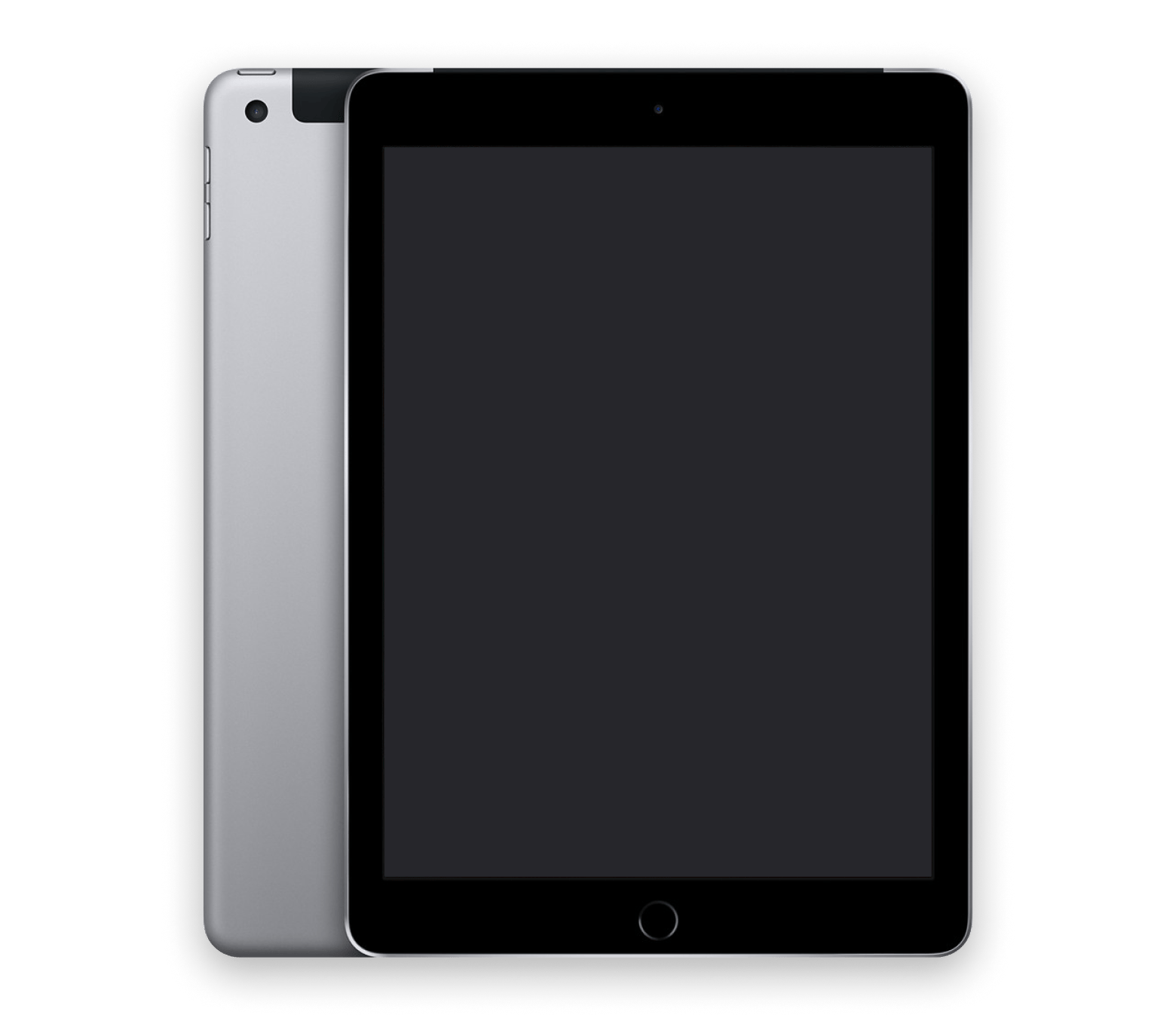
In 2018, Apple doubled down on making the iPad a student device. It announced it in a student-focused event and gave it one of Apple's premium features – the Apple Pencil. It also got upgraded from A7 to A10 chip.
When I checked it out, I was quite impressed, as the base iPad had now become powerful and more practical.
Major details:
- Display: 9.7-inch Retina Display, 2048 x 1536 resolution
- Chip: A10 Fusion chip
- Storage: 32GB and 128GB options
- Cameras: 8MP rear, 1.2MP front camera
- Connectivity: Lightning, Wi-Fi, optional 4G LTE
Updates & upgrades:
- Apple Pencil support: Great choice for note-taking and creative projects
- A10 Fusion chip: Solid performance even when dealing with demanding apps
iPad milestones:
- Bringing the Apple Pencil to the iPad made the premium feature available to everyday iPad users.
- With its affordable price and classroom-focused features such as ClassKit, it became quite popular in schools.
This iPad generation opened up creative possibilities for students, educators, and casual users.
iPad Pro (3rd generation)
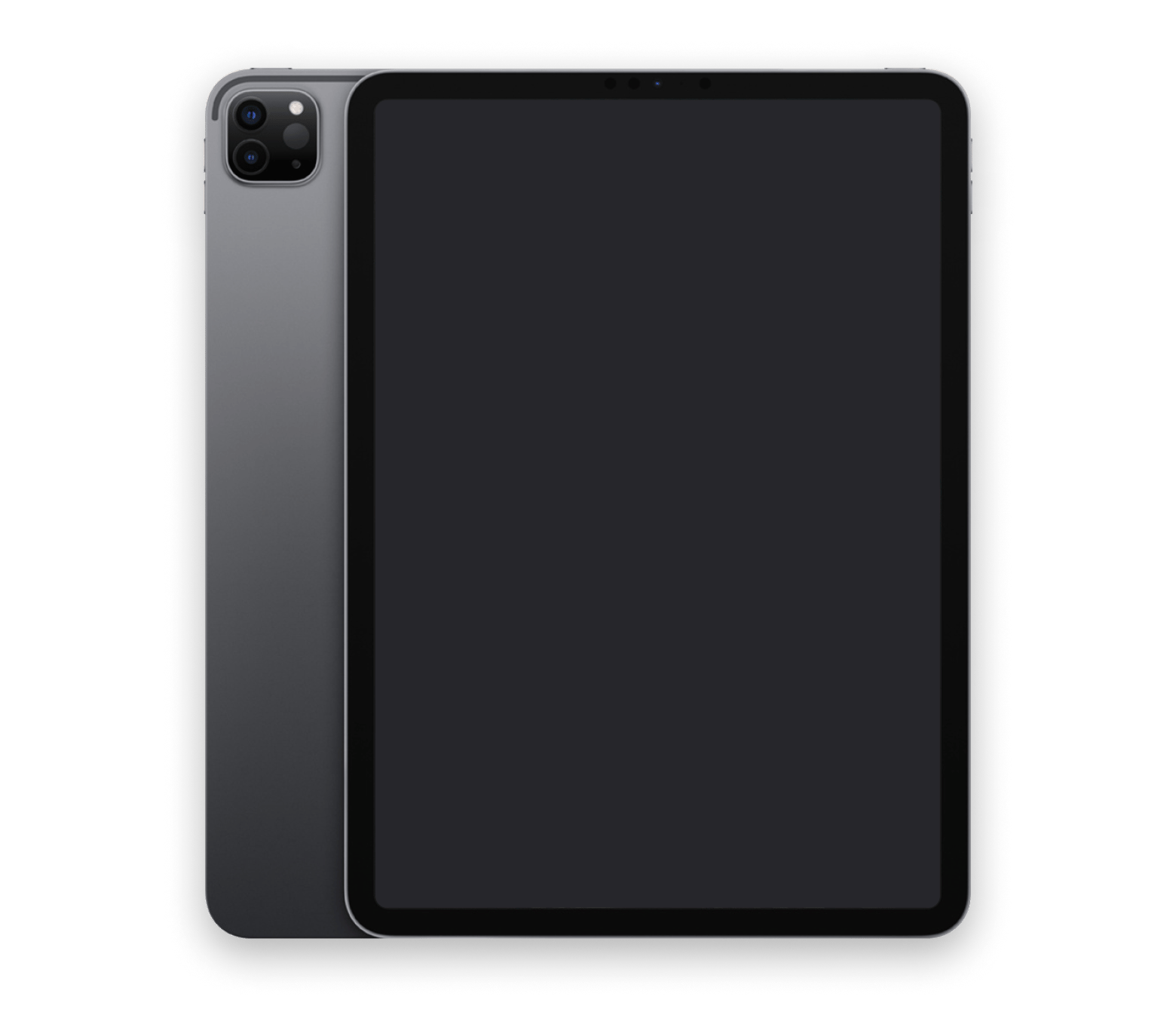
The 3rd gen iPad Pro brought some huge changes to the iPads. It had a new design with an edge-to-edge Liquid Retina display, removed the home button, switched from Lightning to USB-C, and brought the Face ID for the first time. The Apple Pencil could also magnetically attach to the side and automatically charge, and there was a new detachable Folio Keyboard for those who wanted to use it as a laptop. Quite futuristic at the time.
Oh, and the smaller 10.5" version became 11".
Major details:
- Display: Liquid Retina displays. 11-inch (2388 x 1668 resolution) and 12.9-inch (2732 x 2048 resolution)
- Chip: A12X Bionic chip
- Storage: 64GB, 256GB, 512GB, and 1TB options
- Cameras: 12MP rear and 7MP front camera
- Connectivity: USB-C, Wi-Fi, optional 4G LTE
Updates & upgrades:
- Liquid Retina display: New edge-to-edge display that eliminated the home button
- Face ID: Replaced Touch ID
- USB-C Port: Replaced the Lightning connector
- A12X Bionic chip: Outperformed many laptops of the same year
- Magnetic Apple Pencil (2nd Gen): Redesigned magnetic Apple Pencil
- New design language: Flat edges, thinner bezels, and no home button
iPad milestones:
- This was the first iPad with an edge-to-edge display.
- It kick-started the USB-C revolution long before the iPhones made the switch.
- The 2nd gen Apple Pencil significantly improved the stylus experience.
The 3rd gen iPad Pro pretty much redefined what an iPad could be.
iPad mini (5th generation)
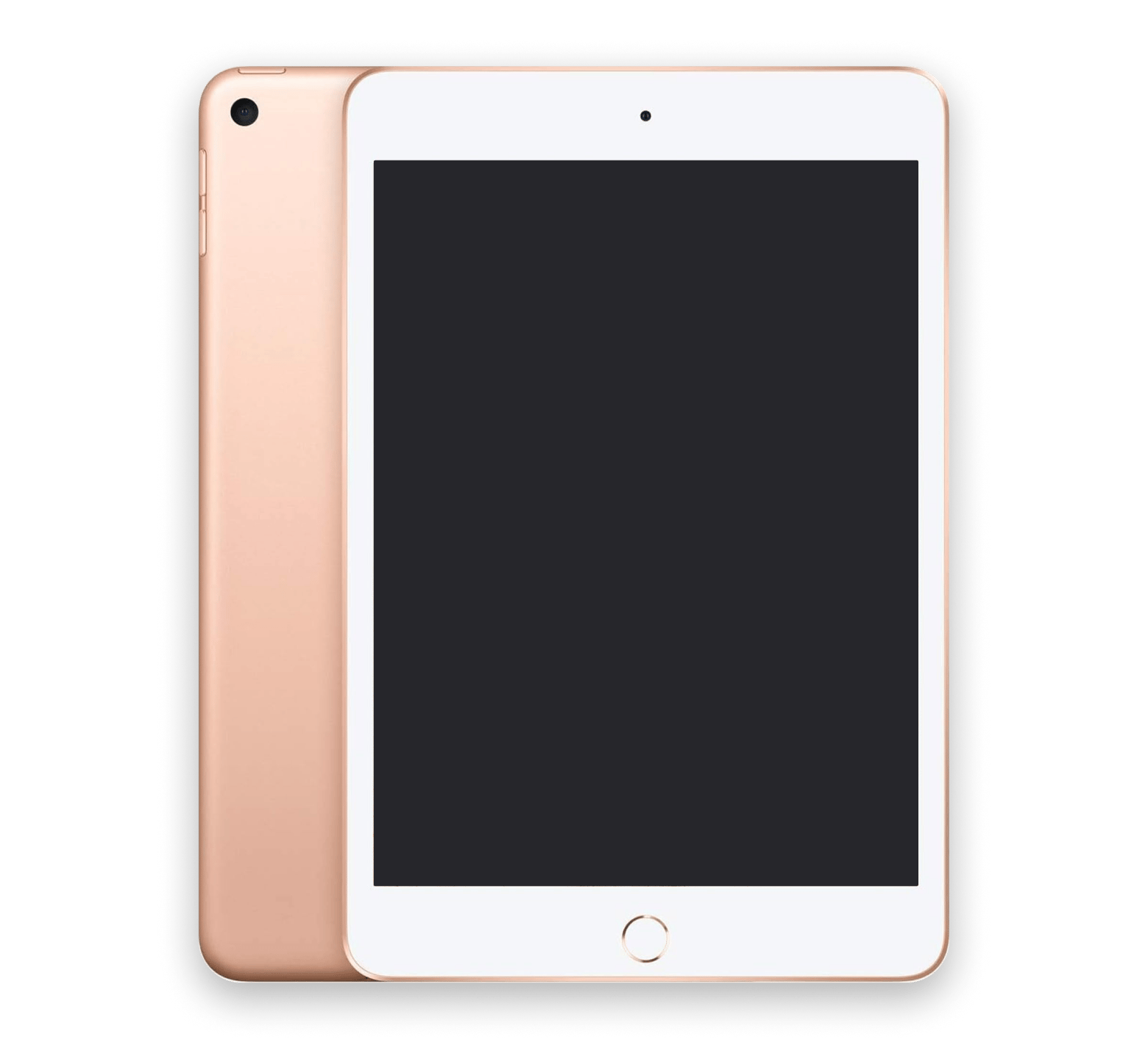
After 4 years, the mini came back in 2019. It remained largely the same on the outside, although it had a much-improved LCD display and got the 1st gen Apple Pencil. On the inside, it sported the all-powerful A12 Bionic chip.
Major details:
- Display: 7.9-inch Retina Display, 2048 x 1536 resolution, True Tone, and wide color (P3)
- Chip: A12 Bionic chip with 64-bit architecture and Neural Engine
- Storage: 64GB and 256GB options
- Cameras: 8MP rear and 7MP front camera
- Connectivity: Lightning, Wi-Fi, optional 4G LTE
Updates & upgrades:
- A12 Bionic power: The same processor as the iPad Air (3rd Gen) and iPhone XS.
- Apple Pencil support: iPad Mini with the 1st Gen Apple Pencil
iPad milestones:
- After years of uncertainty, the Mini came back for people who loved its compactness.
- While the previous generations featured older, less powerful chips, the 5th gen model had the latest A12 chip.
It was a capable iPad in a small package.
iPad Air (3rd generation)
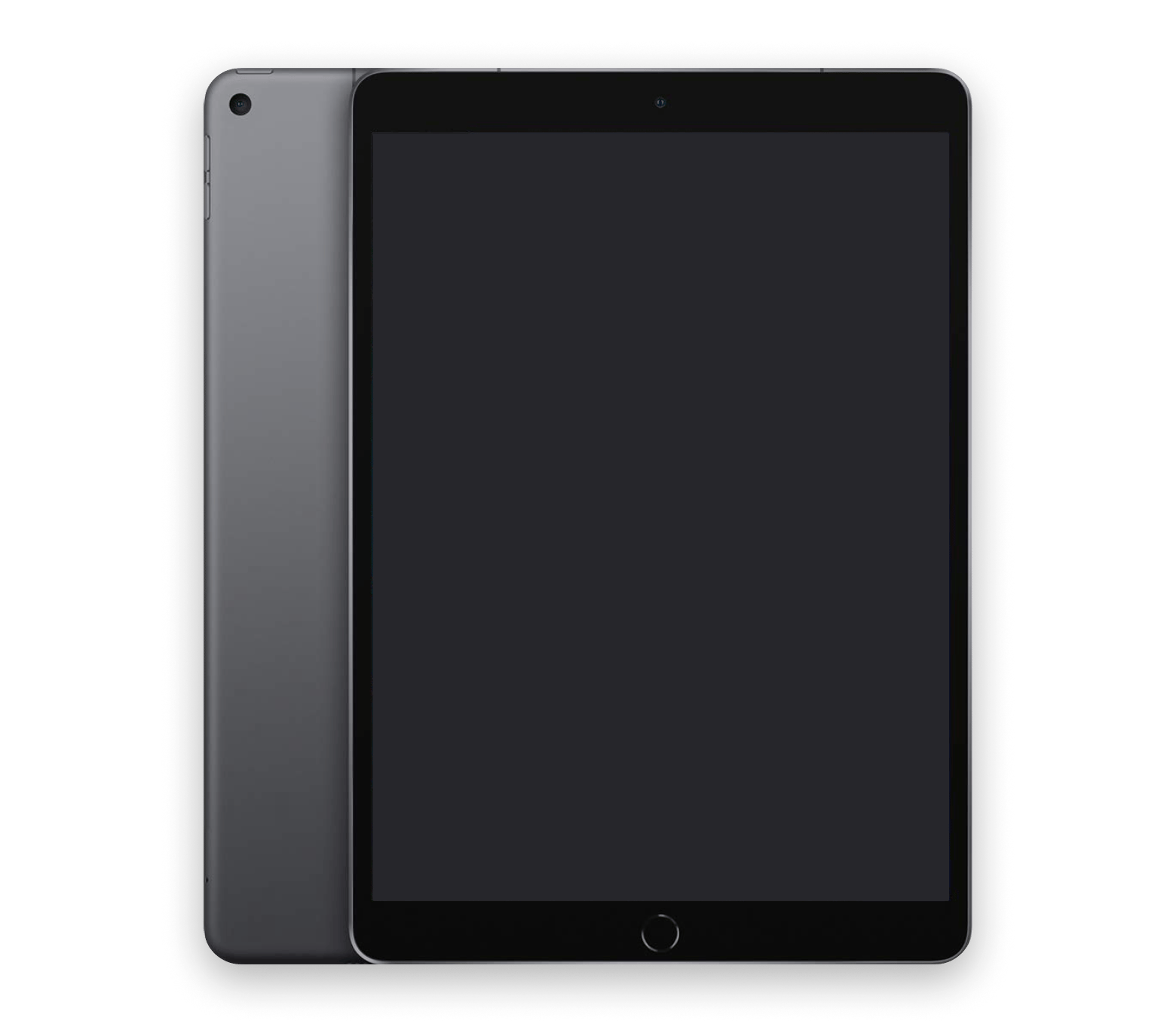
Alongside the Mini, the iPad Air series also made a comeback after 5 years. It had some significant improvements, such as the A12 chip, the 1st gen Apple Pencil, and the Folio Keyboard. It also got a new premium design that looked much like the 2017 iPad Pro but retained the Lightning connector.
Major details:
- Display: 10.5-inch Retina Display, 2224 x 1668 resolution
- Chip: A12 Bionic chip
- Storage: 64GB and 256GB options
- Cameras: 8MP rear and 7MP front camera
- Connectivity: Lightning, Wi-Fi, optional 4G LTE
Updates & upgrades:
- 10.5-inch display: Borrowed from the 2nd gen iPad Pro, moving away from 9.7 inches
- A12 Bionic chip: Featured the same processor found in the iPhone XS and XR for much more power
- Apple Pencil and Smart Keyboard support: Increased the productivity of the Air series
iPad milestones:
- It revived the Air series after 5 years.
- Apple Pencil and Smart Keyboard support made it a budget-friendly option for creatives and students.
The Air came back to sit between the iPad and the Pro.
iPad (7th generation)
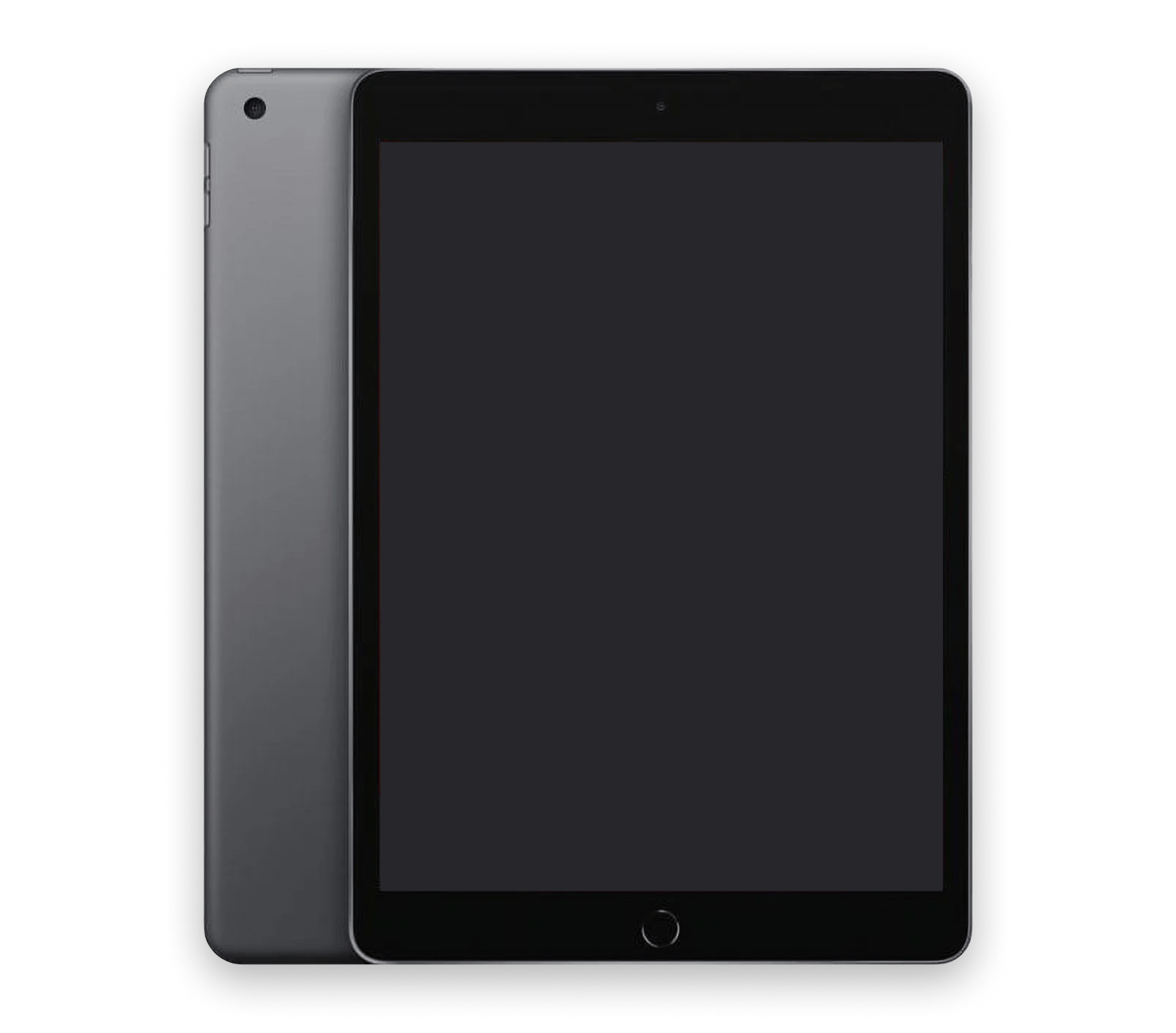
The iPad (7th generation) brought some nice upgrades to the student-focused model. It was now bigger with a 10.2-inch display, and it had the Smart Connector to make it compatible with the Smart Keyboard for the first time. It also brought a dedicated operating system meant for the iPads, the new iPad OS. However, it didn't have any changes in the chip, cameras, and connectors, so I didn't find it exciting.
Major details:
- Display: 10.2-inch Retina Display, 2160 x 1620 resolution, True Tone
- Chip: A10 Fusion chip with 64-bit architecture
- Storage: 32GB and 128GB options
- Cameras: 8MP rear and 1.2MP front camera
- Connectivity: Lightning, Smart Connector, Wi-Fi, optional 4G LTE
Updates & upgrades:
- iPad OS: Modified version of iOS with several multitasking and productivity features
- Larger display: The 10.2-inch display with more screen area
- Smart Keyboard support: Apple's Smart Keyboard pair
iPad milestones:
- This was the first iPad to feature the iPadOS.
- The iPad could now be used with the Smart Keyboard, something that significantly enhanced its productivity.
- This was the first iPad with a larger display since its launch in 2010.
While it wasn't a flashy update, it still had some nice touches.
iPad Pro (4th generation)
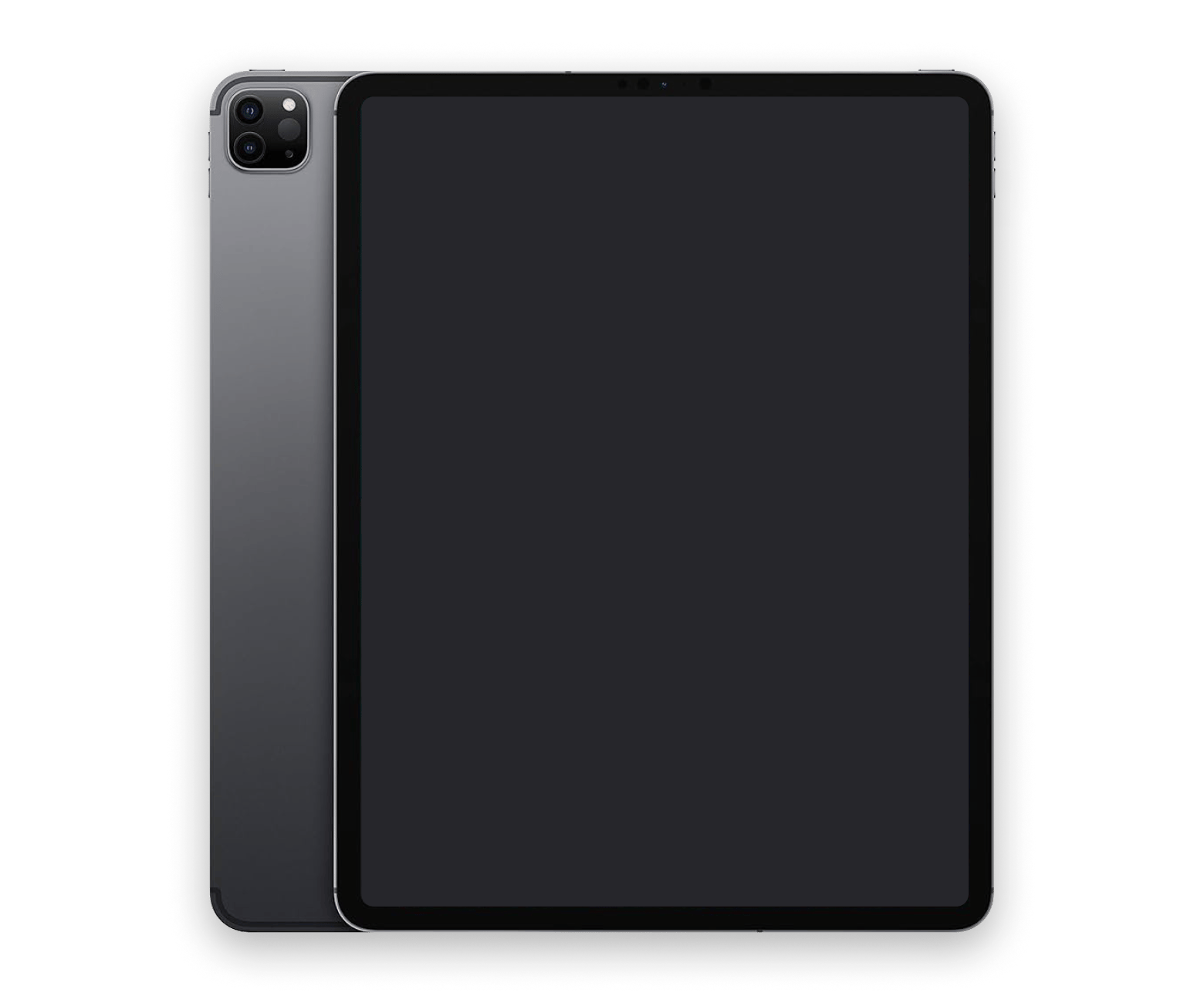
The 2020 iPad Pro retained the revised design of the 3rd gen, but it brought several features that pushed it further as the industry standard. It came with a souped-up version of the A12 chip known as the A12Z and introduced a new Magic Keyboard with a trackpad. The rear camera system was also significantly enhanced – it now had a 12MP wide sensor, a 10MP ultra-wide sensor, and a dedicated LiDAR sensor for AR applications.
The iPad Pro also got the recently released iPadOS to enhance multitasking, productivity, and Apple Pencil use.
Major details:
- Display: 11-inch (2388 x 1668 resolution) and 12.9-inch (2732 x 2048 resolution)
- Chip: A12Z Bionic chip
- Storage: 128GB, 256GB, 512GB, and 1TB options
- Cameras: 12MP wide and 10MP ultra-wide rear cameras with LiDAR scanner. 7MP front camera.
- Connectivity: USB-C, Wi-Fi 6, optional 4G LTE
Updates & upgrades:
- LiDAR scanner: Depth-sensing for AR apps and creative tasks
- Dual rear cameras: Dual camera, with the ultra-wide one expanding the iPad's versatility for photography and videography
- Wi-Fi 6: Faster and more reliable wireless connectivity
- Magic Keyboard with trackpad: Brought laptop-like navigation
iPad milestones:
- This was the first Apple device to have a LiDAR scanner, setting the stage for future AR advancements.
- The new Magic Keyboard with trackpad brought it even closer to being a true laptop alternative.
The iPad has now reached excellent levels of productivity with this model.
iPad (8th generation)
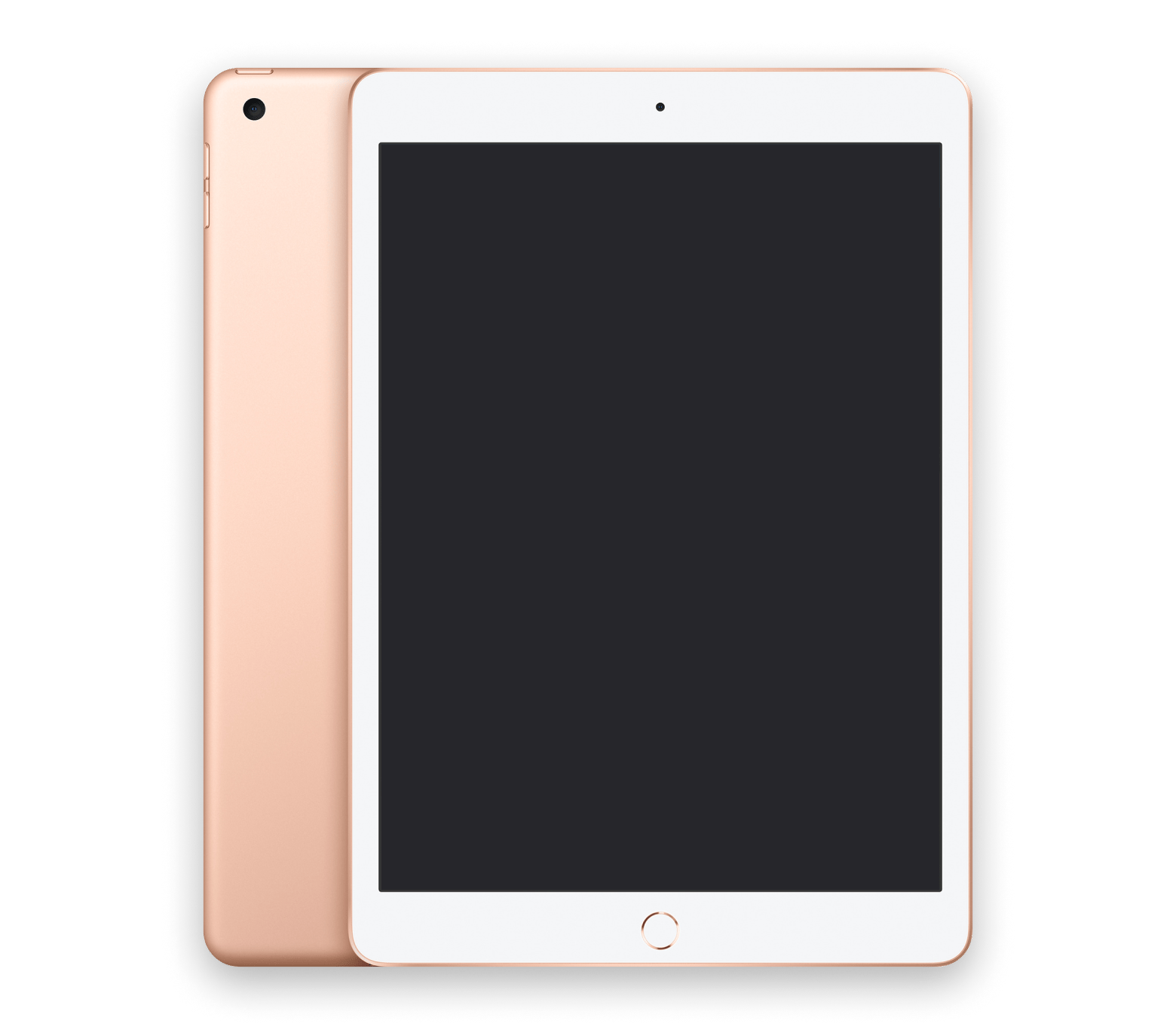
The 2020 iPad release brought even more performance with the A12 chip, making it 40% faster than the previous model. However, it didn't have many design changes, retaining the older bezel design, Lightning connector, and 1st gen Apple Pencil.
Major details:
- Display: 10.2-inch Retina Display, 2160 x 1620 resolution
- Chip: A12 Bionic chip
- Storage: 32GB and 128GB options
- Cameras: 8MP rear camera, 1.2MP front camera
- Connectivity: Lightning, Smart Connector, Wi-Fi, optional 4G LTE
Updates & upgrades:
- A12 Bionic Chip: A12 comprehensively solved the lack of a slower chip
- Still Compatible with Key Accessories: Apple Pencil (1st Gen) and Smart Keyboard support
iPad milestones:
- The iPad now packed serious power, which was great at its price.
- iPad 8 became the go-to choice for budget-conscious users who wanted a powerful iPad.
The 8th gen iPad wasn't flashy, but it didn't need to be for its price. It had a powerful chip, Apple Pencil, and Smart Keyboard.
iPad Air (4th generation)
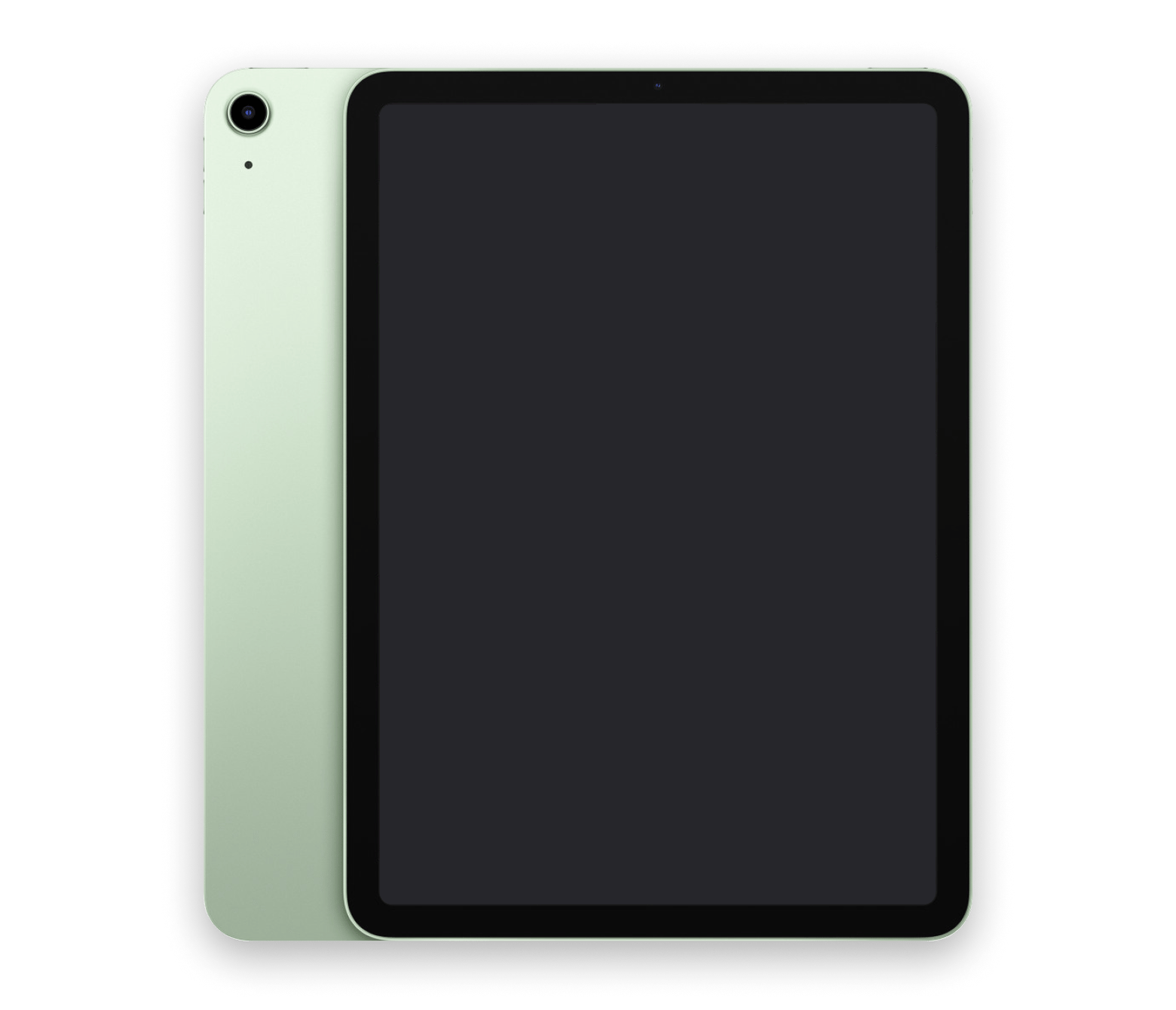
The 2020 iPad Air was a showstopper, and I can say it effectively bridged the big gap between the new iPads and iPad Pros. First, it came with a great new design that eliminated the home button to stretch the screen to 10.9 inches. Touch ID remained, but it was now on the top button. The Lightning connector became USB-C, the 8MP rear camera became 12MP, and Apple Pencil support was upgraded to 2nd gen.
Major details:
- Display: 10.9-inch Liquid Retina Display, 2360 x 1640 resolution, True Tone, P3 wide color
- Chip: A14 Bionic chip
- Storage: 64GB and 256GB options
- Cameras: 12MP wide rear camera, 7MP front camera
- Connectivity: USB-C, Wi-Fi 6, optional 4G LTE
Updates & upgrades:
- Redesigned look: Squared-off edges and an edge-to-edge display
- A14 Bionic chip: Brought the A14 chip, making it a powerhouse
- Apple Pencil (2nd Gen) support: Apple Pencil with magnetic attachment and wireless charging
- USB-C connectivity: Moved from Lightning to USB-C for faster data transfers and compatibility
- Touch ID in power button: Moved from the (now missing) home button to the top button
iPad milestones:
- With this release, Apple now offers Pro features for a lower budget.
- The Air series finally had an industry-standard performance.
This release made it possible to get top-tier features of the Pro at a fair price.
iPad Pro (5th generation)
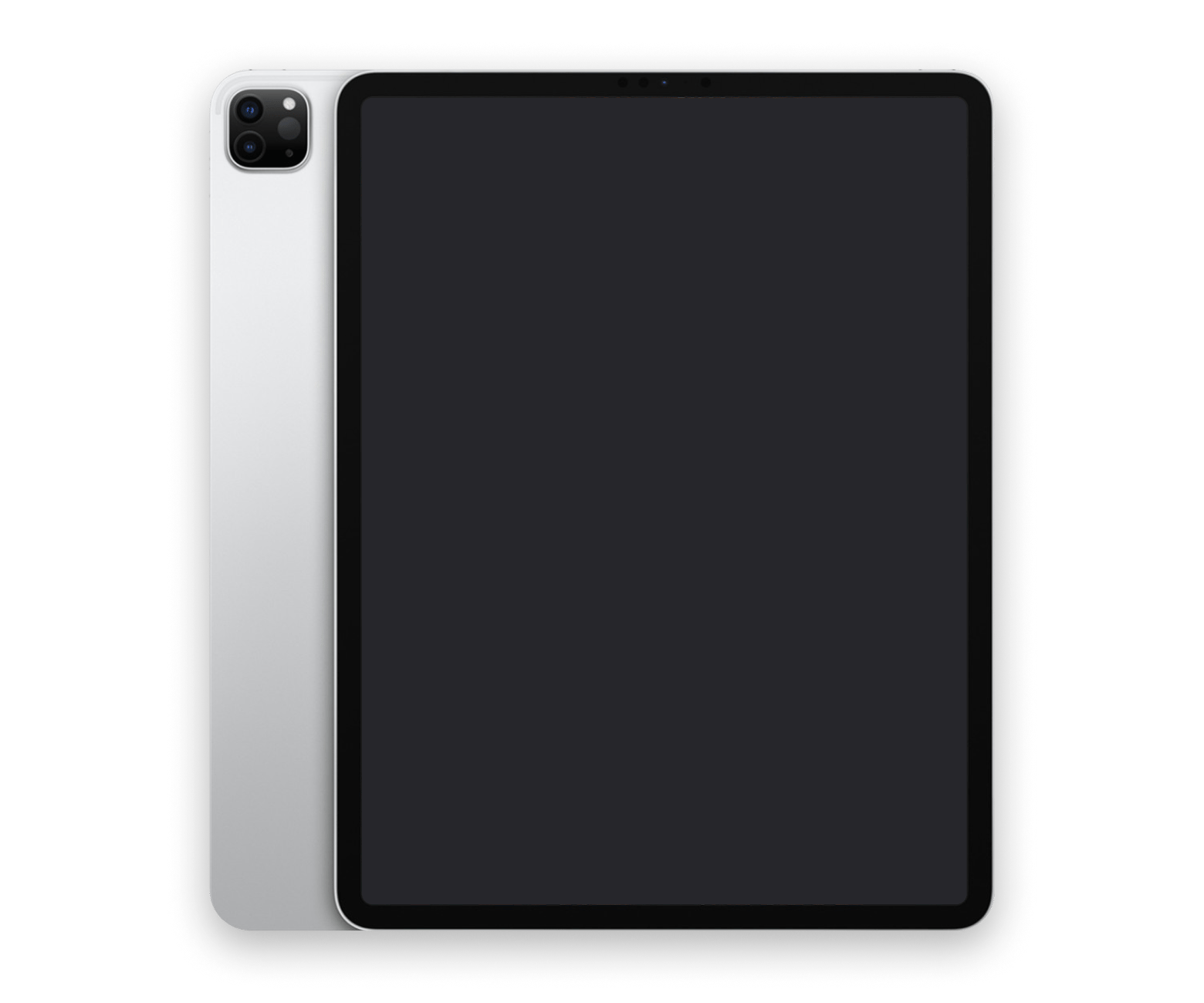
This iPad Pro made quite the headlines. Not because of an overhaul but simply because of the chip it used. Apple had moved to its custom Silicon chips in the 2020 MacBooks, and it brought the same to the iPad Pro. This meant moving from mobile-centric chips to the same chips used on the MacBook, overhauling what the iPad could do. There weren't many other changes (they weren't necessary), but the 12.9-inch variant upgraded its display to a mini LED HDR.
Major details:
- Display: 11-inch Liquid Retina display (2388 x 1668 resolution), 12.9-inch Liquid Retina XDR display (2732 x 2048 resolution)
- Chip: M1 chip
- Storage: 128GB, 256GB, 512GB, 1TB, and a new 2TB option
- Cameras: 12MP wide and 10MP ultra-wide rear cameras and 12MP ultra-wide front camera with Center Stage
- Connectivity: USB-C with Thunderbolt/USB 4, Wi-Fi 6, optional 5G
Updates & upgrades:
- M1 chip: iPad Pro now has desktop performance
- Liquid Retina XDR display: The display in the 12.9" model with stunning HDR visuals, the same as professional-grade monitors
- 5G connectivity: 5G support with iPad
- Center Stage camera: Keeps users centered during video calls, thanks to machine learning
iPad milestones:
- This was the first time Apple used a laptop chip on an iPad.
- The Liquid Retina XDR display was now the industry benchmark.
As a person who runs heavy pro apps frequently, I now don’t have to worry about performance issues with the iPad Pro.
iPad (9th generation)
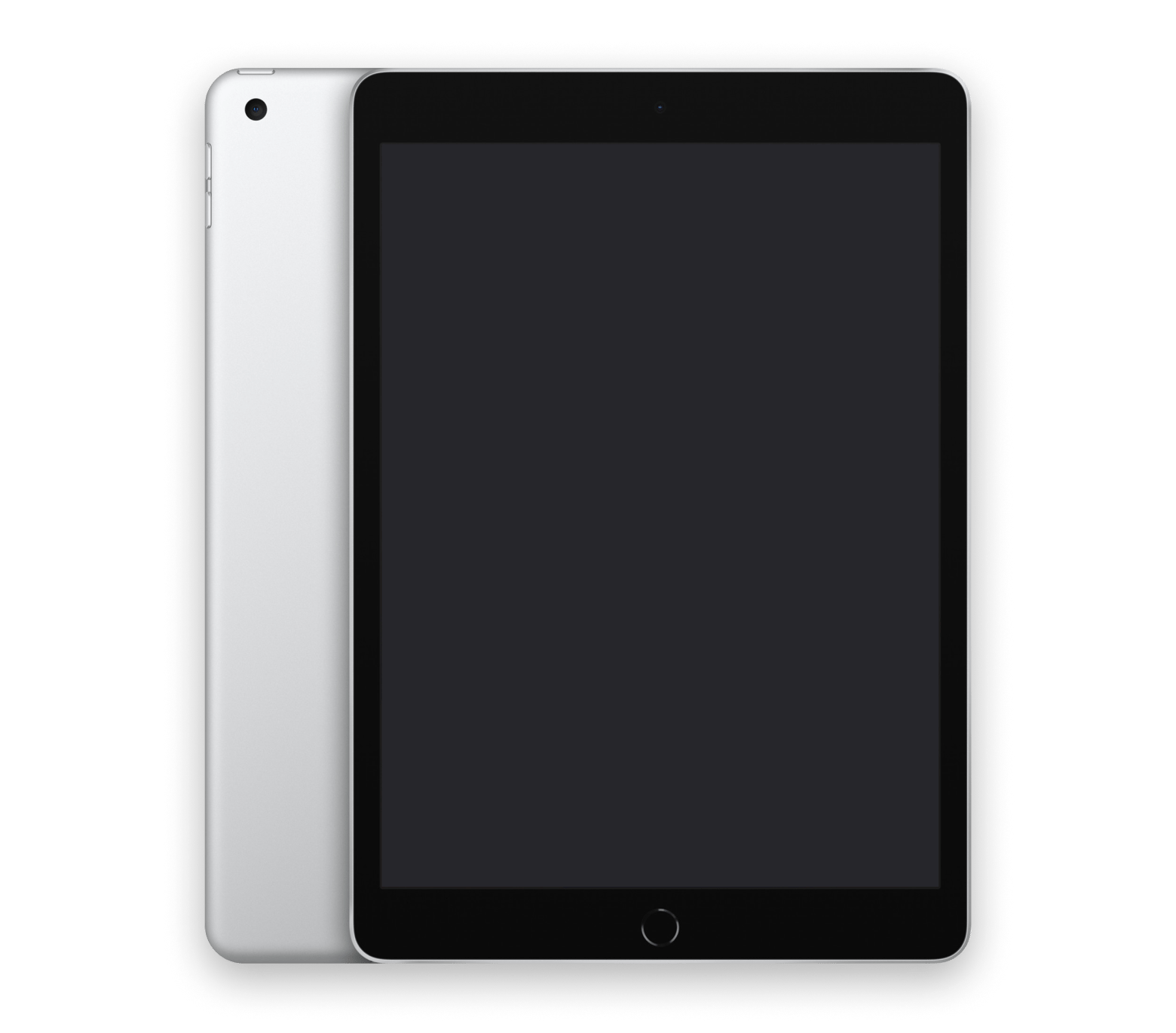
The 2021 iPad remained budget-friendly, but this also meant it retained some older features such as the home button, 1st gen Apple Pencil, and Lightning connector. However, it got the much-improved A13 Bionic chip for better performance and a new 12MP ultra-wide front camera with Center Stage.
Major details:
- Display: 10.2-inch Retina Display, 2160 x 1620 resolution
- Chip: A13 Bionic chip with Neural Engine
- Storage: 64GB and 256GB options
- Cameras: 8MP wide rear camera, 12MP ultra-wide front camera with Center Stage
- Connectivity: Lightning, Smart Connector, Wi-Fi, optional 4G LTE
Updates & upgrades:
- A13 Bionic chip: 20% boost in performance over the A12
- Center stage: Keeps users in the frame during video calls
iPad milestones:
- Video calling for classes and meetings was now much better, thanks to Center Stage.
- Apple improved performance and doubled storage without increasing the price.
While it didn't feature the latest iPad designs and features, the iPad continued to offer a reliable experience at a low price.
iPad mini (6th generation)

The mini had stayed largely the same since 2015 with the Mini 4, but it got the modern treatment in the 2021 release. Its design now matched the Air and Pro, with an edge-to-edge screen that got larger to 8.3 inches. It was also updated with the USB-C, 2nd gen Apple Pencil, 5G compatibility, and 12MP cameras in the rear and front. It also sported the powerful A15 chip.
Major details:
- Display: 8.3-inch Liquid Retina Display, 2266 x 1488 resolution
- Chip: A15 Bionic chip
- Storage: 64GB and 256GB options
- Cameras: 12MP wide camera, 12MP ultra-wide camera with Center Stage
- Connectivity: USB-C, Wi-Fi 6, optional 5G
Updates & upgrades:
- Redesigned look: Bezel-less with no home button with Touch ID on the top
- A15 Bionic power: A15 chip from the iPhone 13
- Apple Pencil (2nd Gen) support: Better one than the iPad
- USB-C and 5G: Faster and versatile connectivity
iPad milestones:
- This was the biggest Mini design since its launch in 2012.
- You could now get advanced features and the latest tech with the small size of the iPad mini.
For the first time, the iPad Mini was seen as a powerful iPad option.
iPad Air (5th generation)
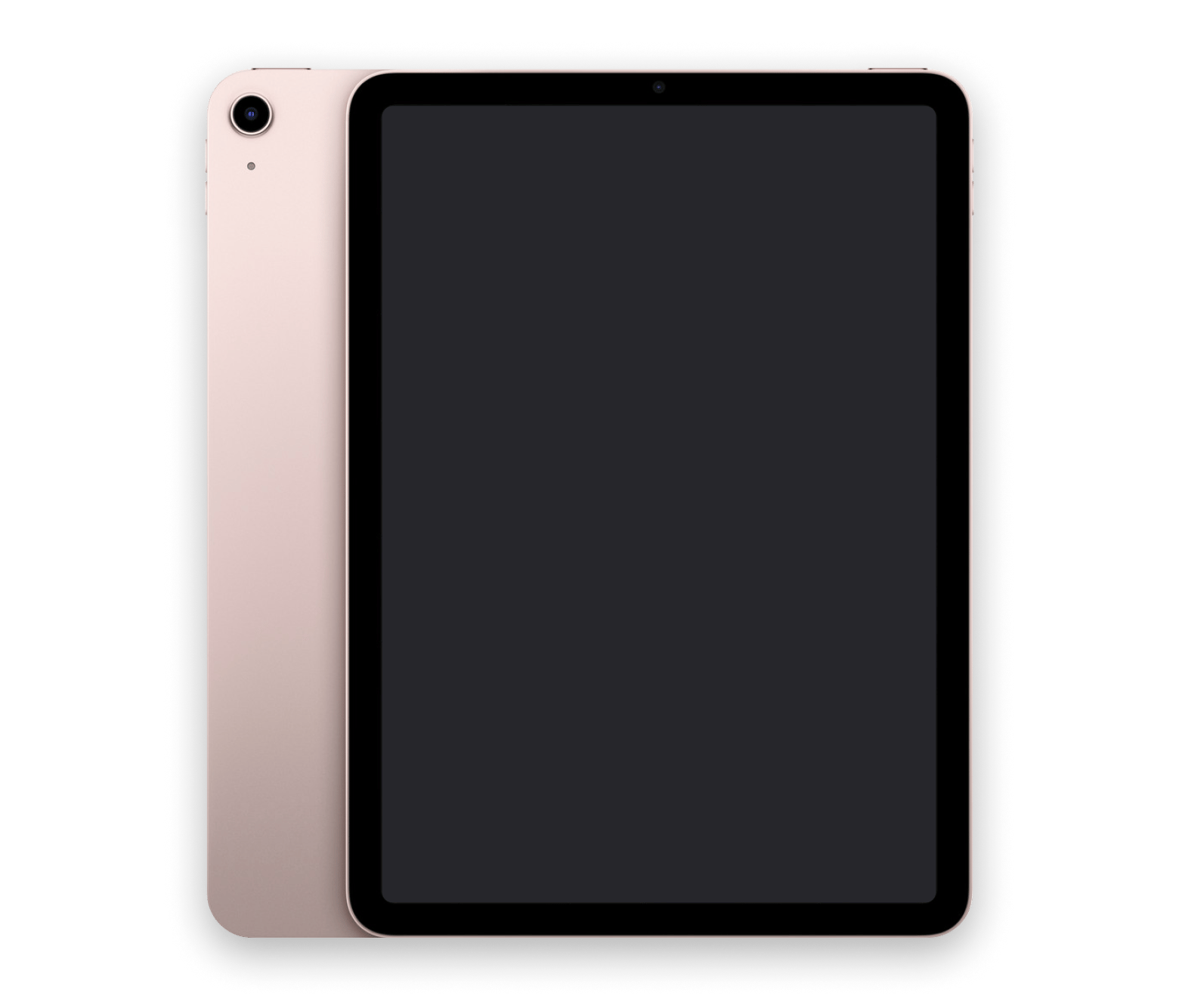
In its 5th iteration in 2022, the iPad Air got the powerful M1 chip. It also had 5G support, and its front-facing camera was now 12MP with Center Stage.
Major details:
- Display: 10.9-inch Liquid Retina Display, 2360 x 1640 resolution
- Chip: M1 chip
- Storage: 64GB and 256GB options
- Cameras: 12MP rear camera, 12MP ultra-wide front camera with Center Stage
- Connectivity: USB-C, Wi-Fi 6, optional 5G
Updates & upgrades:
- M1 chip: 60% faster than its predecessor
- Center Stage camera: 12MP from the camera with Center Stage
iPad milestones:
- This was the first non-Pro iPad to get the M series chips.
- The series reached new levels of connectivity speeds with Wi-Fi 6, USB-C, and 5G support.
Much love from Air users:
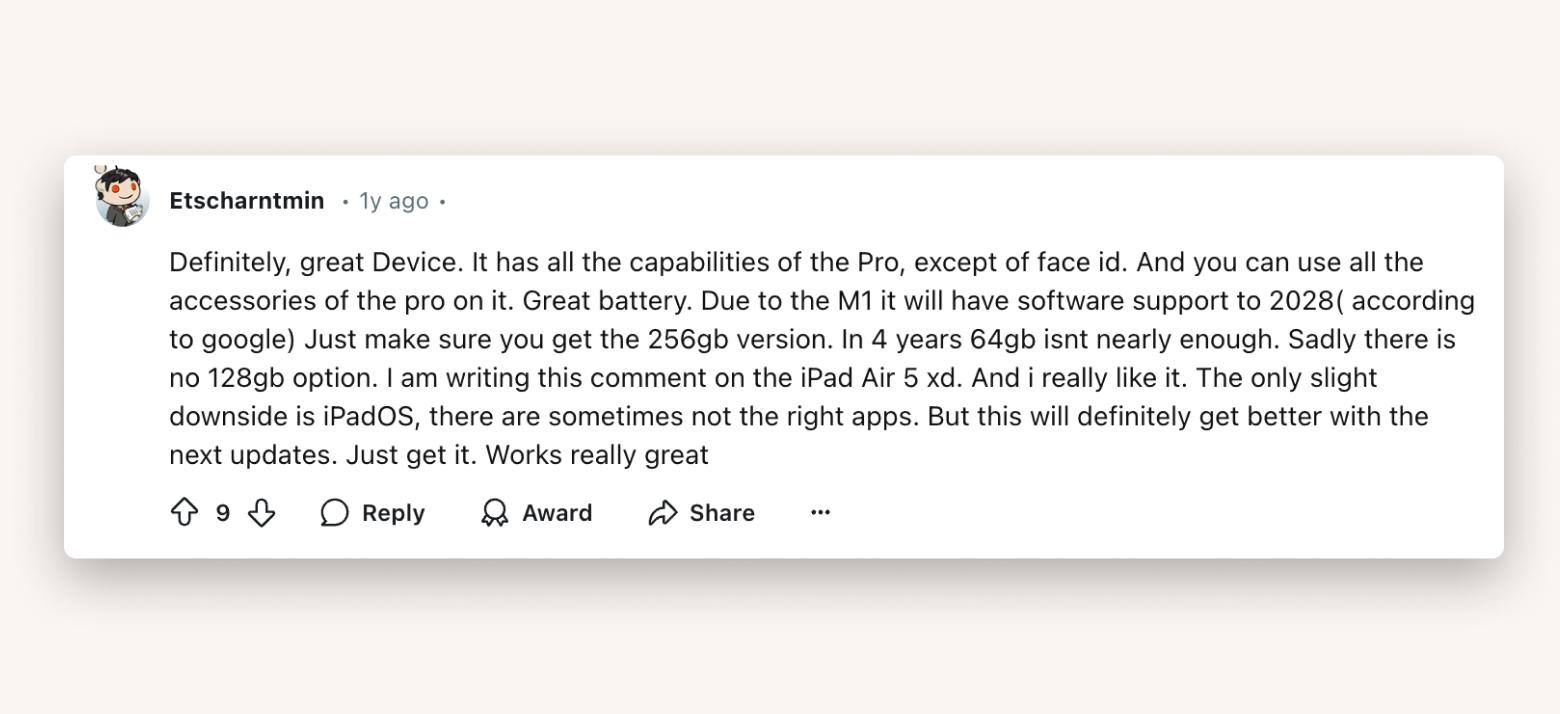
Image source: https://www.reddit.com/r/ipad/...
The Air continued to bring "Pro" features to the mid-tier customers.
iPad (10th generation)
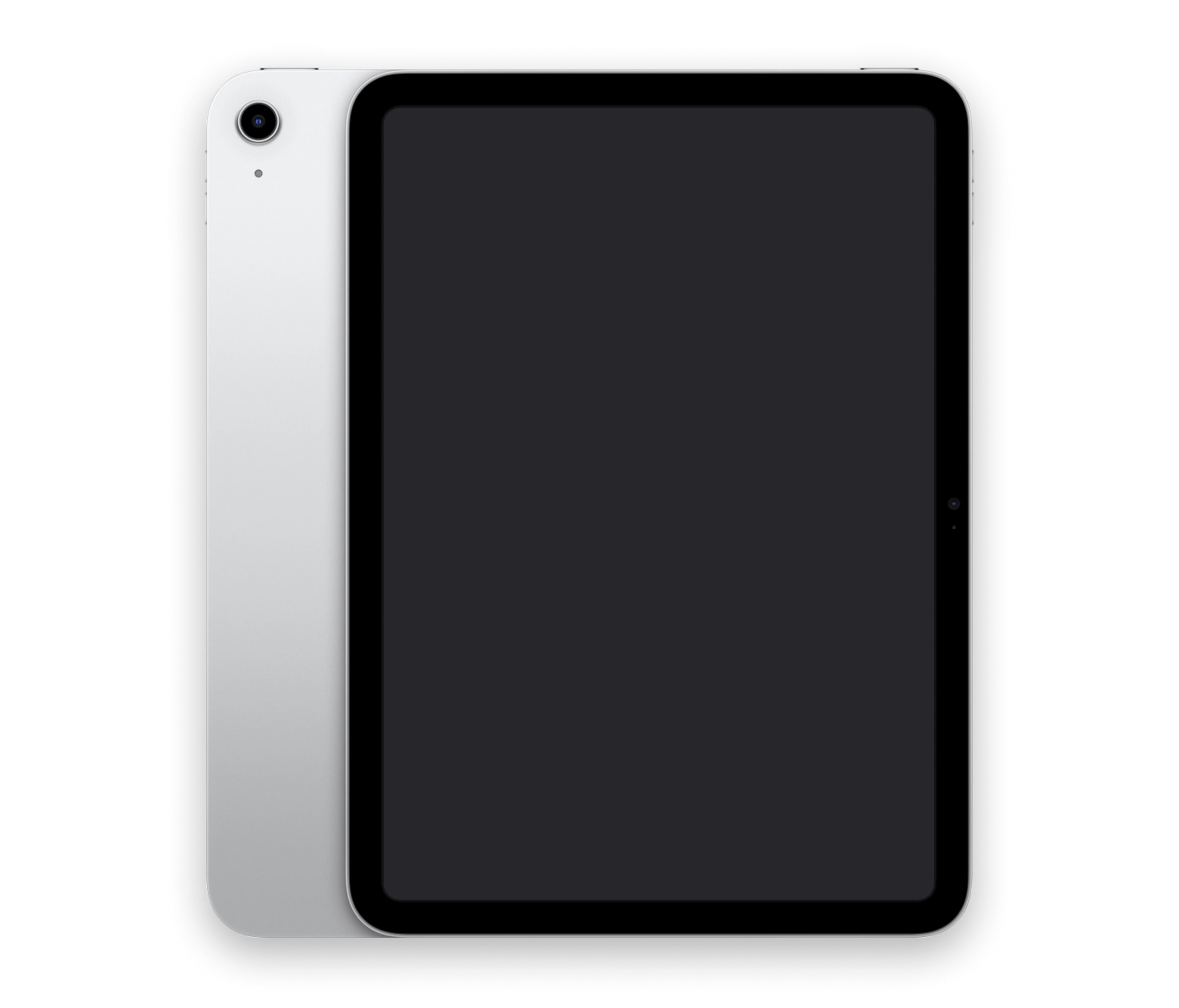
After almost a decade, Apple finally decided to give the iPad a new design in 2022. The thick bezels and the home button disappeared to welcome the edge-to-edge design. It also came with USB-C, the A14 Bionic chip, a Liquid Retina display, and 12MP cameras with landscape orientation and Centre Stage for the front one.
Major details:
- Display: 10.9-inch Liquid Retina Display, 2360 x 1640 resolution
- Chip: A14 Bionic chip
- Storage: 64GB and 256GB options
- Cameras: Rear: 12MP wide camera, 12MP ultra-wide camera with Center Stage (landscape orientation)
- Connectivity: USB-C, Wi-Fi 6, optional 5G
Updates & upgrades:
- New design: Ditched the bezels and home button
- A14 Bionic chip: 20% improvement in CPU performance and a 10% boost in graphics compared to the 9th-gen
- USB-C Port: Made data transfer much faster and the device more compatible
- The front camera in landscape: Video calls have a more natural feel
iPad milestones:
- The iPad finally got a modern design to bring it up to far with the rest of the iPad family.
- While it was a small change, the landscape front camera was a very impactful and welcome change. This was the first iPad to have it.
Finally, the iPad became stylish and modern.
iPad Pro (6th generation)
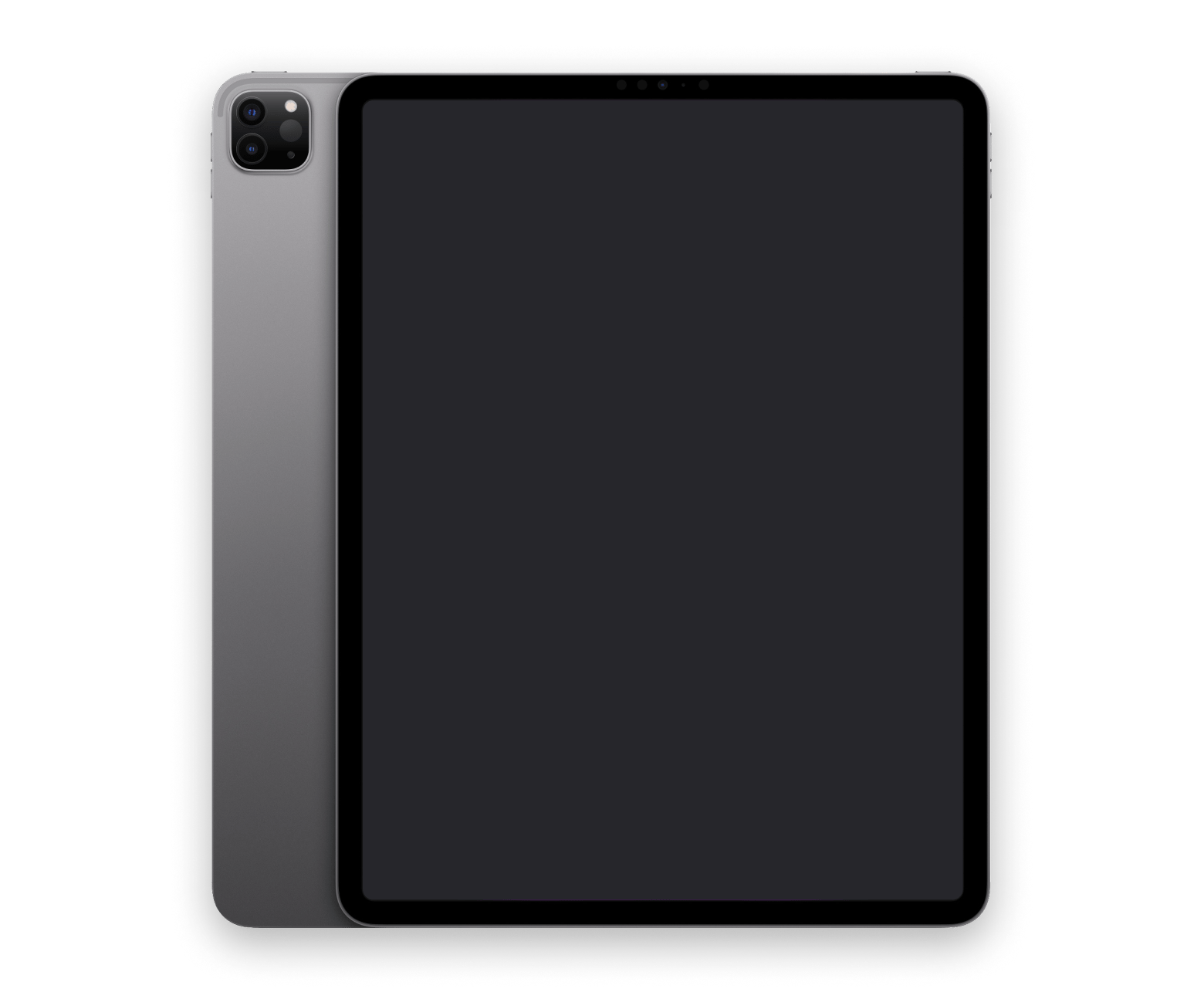
The 6th gen iPad Pro came out in 2022, and it sported the newer M2 chip for more power. Its other updates were Wi-Fi 6E support, Bluetooth 5.3, and Smart HDR 4. The Apple Pencil could also work without touching the screen (hovering). Minimal changes, but I found them to be quite satisfying.
Major details:
- Display: 11-inch Liquid Retina Display (2388 x 1668 resolution) and 12.9-inch Liquid Retina XDR Display (2732 x 2048 resolution)
- Chip: M2 chip
- Storage: 128GB, 256GB, 512 GB, 1GB, and 2 TB options
- Cameras: 12MP wide and 10MP ultra-wide rear cameras, and 12MP ultra-wide front camera with Center Stage
- Connectivity: Thunderbolt/USB 4, Wi-Fi 6E, optional 5G
Updates & upgrades:
- M2 Chip: 15% faster CPU performance and 35% faster GPU capabilities compared to the M1
- Apple Pencil hover: Can detect the Apple Pencil up to 12mm above the screen
- Wi-Fi 6E: The latest wireless standard support
iPad milestones:
- This was the first time the Apple Pencil could hover, and it was quite appealing to artists and designers.
- These were the first Apple devices (including iPhones) to support Wi-Fi 6E.
Considering that the M2 outperformed most laptops at the time, the iPad Pro was now unmatched in the category.
iPad Air (6th generation)
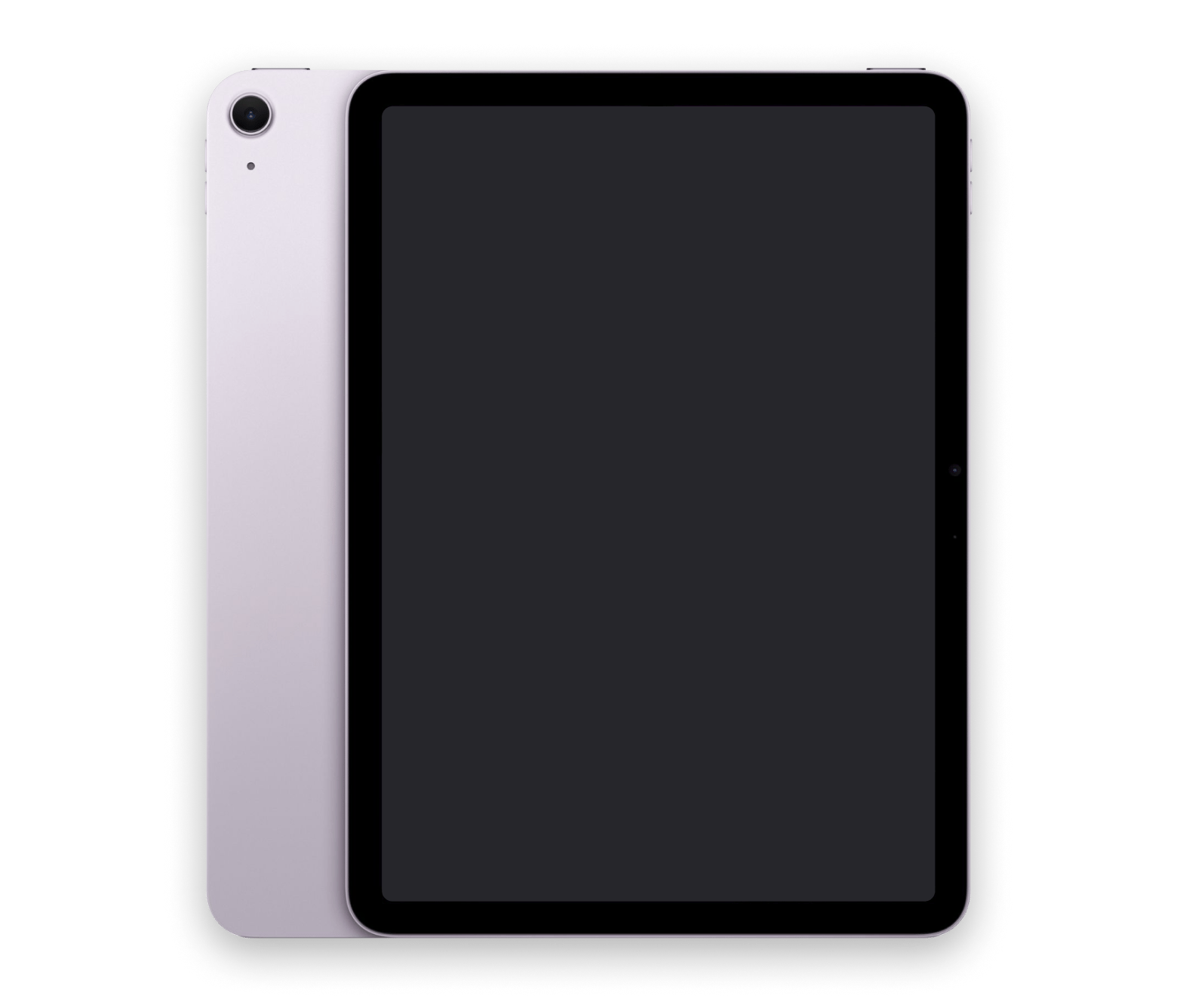
The iPad Air got an update in May 2024, and it now comes in two sizes – the usual 11-inch and an all-new 13-inch model. Its chip has also been upgraded to M2, giving it much better CPU and GPU performance (nearly 50% faster). The display is brighter than its predecessor, it supports Wi-Fi 6E, and the front camera is now in landscape mode.
Major details:
- Display: 11-inch Liquid Retina Display (2360 x 1640 resolution), 13-inch Liquid Retina Display (2732 x 2048 resolution)
- Chip: M2 chip
- Storage: 128GB, 256GB, 512GB, 1 TB options
- Cameras: 12MP wide rear camera, 12MP ultra-wide front camera (landscape) with Center Stage
- Connectivity: USB-C, Wi-Fi 6, optional 5G
Updates & upgrades:
- M2 power: 50% faster than its predecessor
- Landscape camera: More natural landscape position for video calls
iPad milestones:
- The Air lineup got two size options for the first time.
- The iPad Air also adopted the landscape front camera.
The Air is now the ultimate blend of capability and affordability.
iPad Pro (7th generation)
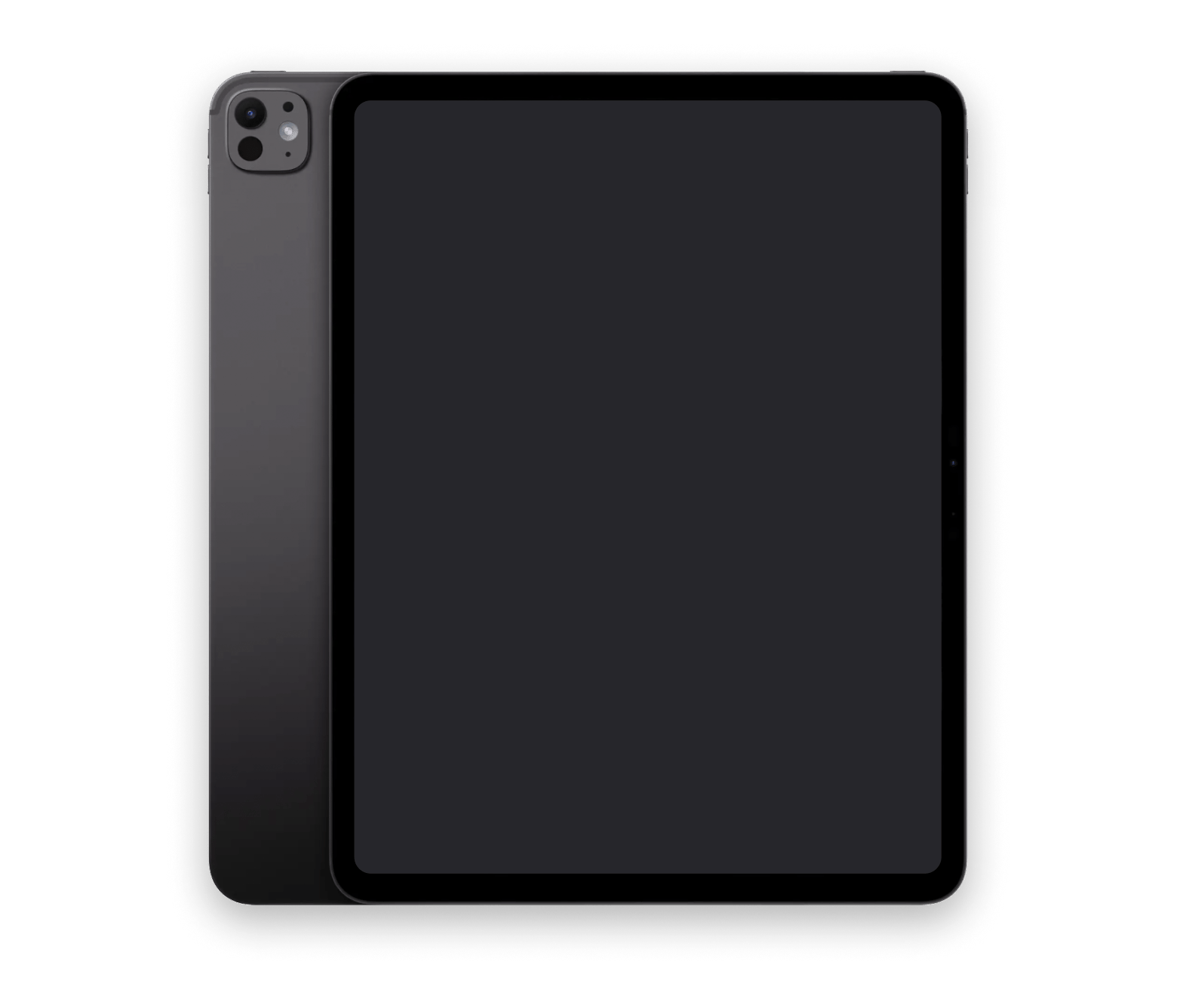
After skipping the 2023 iPad releases, the iPad Pro jumped to the latest M4 chip during the same May release. It was actually the first Apple device to use the 3nm chip, and it gave it advanced AI processing capabilities. The 2024 iPad Pro also debuted an all-new OLED display, bringing a remarkable visual experience.
Major details:
- Display: 11-inch and 13-inch OLED display
- Chip: Apple M4
- Storage: 256GB, 512GB,1TB, 2TB options
- Cameras: 12MP rear, 12MP front with landscape orientation, and Center Stage support
- Connectivity: USB-C with Thunderbolt 4, Wi-Fi 6E, optional 5G
Updates & upgrades:
- M4 chip: Advanced 3nm process with the next-level CPU and GPU performance
- OLED display: Perfect blacks (each pixel is turned off completely), enhanced contrast ratios, and much better energy efficiency
- Apple Pencil Pro: Tool-switching through a squeeze gesture support
iPad milestones:
- The M4 was a major leap in CPU and GPU power, but even more so in the neural engine. It can handle complex AI tasks.
- This was the first iPad to have an OLED display.
All around, the 2024 iPad Pro was a groundbreaking device.
Tip: If you’re interested in LLMs, AI, and machine learning innovations, visit our LLM News website.
iPad mini (7th generation)
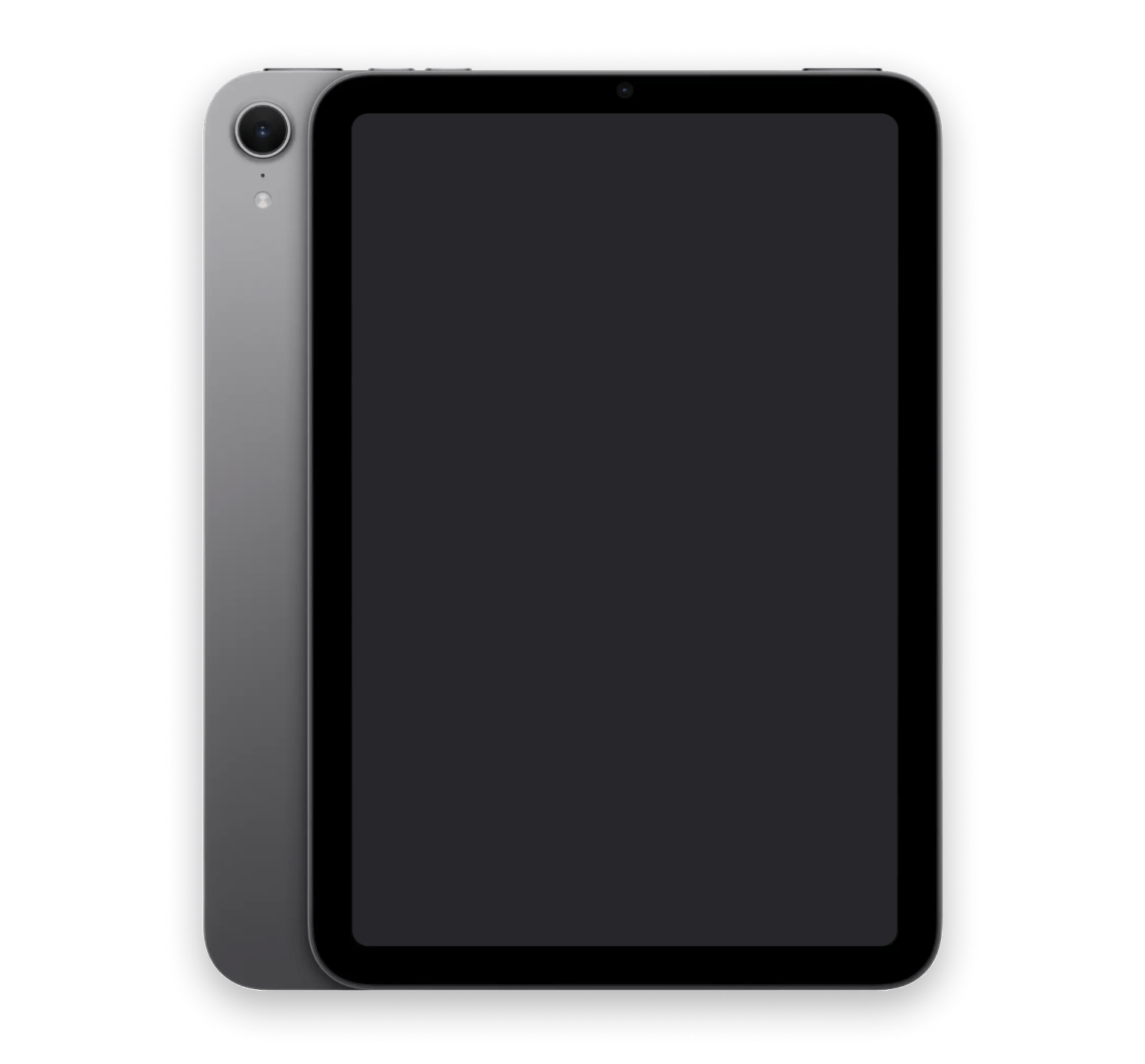
The 7th gen Mini is the latest iPad from Apple, and it came out in October 2024. It features some significant upgrades while still retaining the 8.3" display. These include the A17 chip (a jump from A15), which offers 30% faster CPU performance and 25% faster GPU performance. It also has an enhanced camera with Smart HDR for vivid and realistic photos, alongside support for Wi-Fi 6E and the new Apple Pencil Pro.
Major details:
- Display: 8.3-inch Liquid Retina (2266 x 1488 resolution)
- Chip: A17 Pro chip
- Storage: 128GB, 256GB, 512GB options
- Cameras: 12MP rear camera with Smart HDR 4, 12MP Ultra Wide front camera with Center Stage.
- Connectivity: USB-C (USB 3), Wi-Fi 6E, Bluetooth 5.3
Updates & upgrades:
- Performance: 30% faster CPU and 25% improved GPU performance over the A15 chip
- Apple Intelligence: Writing Tools for enhanced text editing and Image Playground for creative tasks powered by AI
- Camera enhancements: Cinematic stabilization and HDR 4 support
iPad milestones:
- The new iPad Mini has been built to leverage Apple Intelligence, offering lots of advanced AI capabilities.
- This was the first non-Pro iPad to support Apple Pencil Pro.
While it's the smallest iPad, it’s one of the favorite releases as it’s power is now only rivaled by the Pro.
iPad (11th generation)
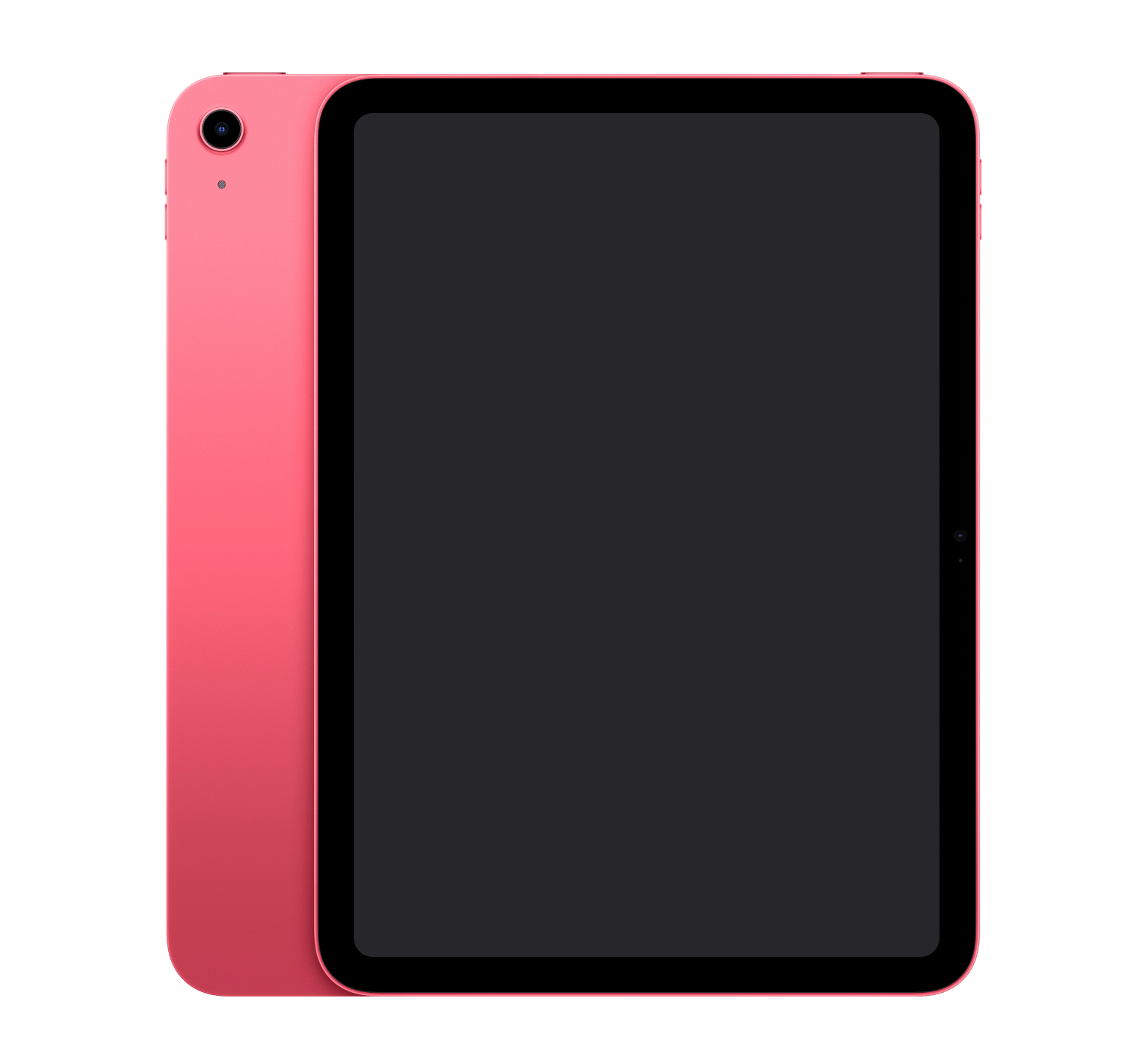
The 11th-generation iPad brings notable enhancements while maintaining its user-friendly design. Equipped with the A16 Bionic chip, it offers a 30% increase in CPU performance and a 25% boost in GPU performance compared to its predecessor.
Notably, this model introduces 128GB of base storage, doubling the previous entry-level capacity. While it doesn't support Apple Intelligence, it remains a solid choice for everyday tasks and casual users.
Major details:
Display: 11-inch Liquid Retina (2360 x 1640 resolution)
Chip: A16 Bionic
Storage: 128GB, 256GB, 512GB options
Cameras: 12MP rear camera, 12MP Ultra Wide front camera with Center Stage
Connectivity: USB-C, Wi-Fi 6E, Bluetooth 5.3
Updates & upgrades:
Improved CPU and GPU: 30% and 25% faster respectively
Apple Pencil (1st generation) and Magic Keyboard Folio support
Enhanced front camera for video calls with Center Stage
iPad milestones:
First standard iPad with Wi-Fi 6E support
Doubled base storage to 128GB
Reliable performance for students and everyday users without going Pro
iPad Air (7th generation)
The 7th-generation iPad Air was released on March 12, 2025. It offers a major performance boost with the M3 chip and adds creative features, which are ideal for professionals, students, and power users.
Major details:
Display: 11-inch and 13-inch Liquid Retina
Chip: M3
Storage: 128GB, 256GB, 512GB options
Cameras: 12MP rear camera with Smart HDR, 12MP front camera with Center Stage
Connectivity: USB-C, Wi-Fi 6E, Bluetooth 5.3
Updates & upgrades:
Up to 35% faster CPU and 40% faster GPU compared to the previous generation
Apple Intelligence tools: Image Playground and Writing Tools for productivity
Supports Apple Pencil Pro and Magic Keyboard
iPad milestones:
First non-Pro iPad with Apple Intelligence capabilities
Introduced a larger 13-inch option for the Air line
Bridges the gap between the standard iPad and iPad Pro for creatives
Evolution of iPad technology
Across all iPad generations, the company has released technological updates almost yearly. Here's a look at the major technology advancements.
iPad display advancements
Apple has been quite consistent in enhancing the display quality of the iPads. We started with an IPS LCD display with 1024 x 768 resolution in 2010, and now we have OLED displays with perfect blacks and vivid colors.
Here's a look at the evolution:
| iPad Generation | Display upgrades |
| iPad 1st gen (2010) | 9.7-inch IPS LCD display, 1024 x 768 resolution. |
| iPad 3rd gen (2012) | Introduced Retina Display with 2048 x 1536 resolution, doubling sharpness. |
| iPad Pro 1st gen (2015) | Larger 12.9-inch screen with P3 wide color gamut for better color accuracy. Also brought True Tone to adapt the display color and intensity to ambient lighting. |
| iPad Pro 2nd gen (2017) | Brought ProMotion technology with 120Hz refresh rate. It made visuals much smoother and made the Apple Pencil more responsive. |
| iPad Pro 3rd gen (2018) | Introduced Liquid Retina Display, edge-to-edge design, with up to 2732 x 2048 resolution. |
| iPad Pro 5th gen (2021) | Introduced mini-LED technology in the 12.9-inch model. |
| iPad Pro 7th gen (2024) | Shifted to the more superior OLED display. iPad now had perfect black and superior contrast. |
Today, the iPad Pro 7th gen boasts a display that's as advanced as any in the market.
iPad chip and processing power shifts
While the original iPad had a chip that was faster than the competition chips, it isn't remotely comparable to what we have today.
Here's a look at each iPad generation that brought more performance:
| iPad Generation | Chip & processing upgrades |
| iPad 1st generation (2010) | A4 chip. 1 GHz single-core. It was Apple's first custom silicon. Also used on iPhone 4. |
| iPad 2 (2011) | A5 chip. Dual-core CPU, up to 2x faster CPU and 9x faster graphics. |
| iPad 3rd generation (2012) | A5X chip. Quad-core GPU optimized for Retina Display. |
| iPad 4th generation (2012) | A6X chip. Dual-core CPU with quad-core graphics, twice the CPU and graphics performance of A5X. |
| iPad Air (2013) | A7 chip, with new 64-bit architecture. 2x faster CPU and graphics compared to A6. |
| iPad Air 2 (2014) | A8X chip. 40% faster CPU and 2.5x faster graphics than A7. |
| iPad mini 4 (2015) | A8 chip. Enhanced multitasking. |
| iPad Pro 1st generation (2015) | A9X chip. 1.8x faster CPU and 2x faster GPU compared to A8X. |
| iPad 5th generation (2017) | A9 chip. Faster than A8. |
| iPad Pro 2nd generation (2017) | A10X Fusion chip: 6-core CPU, 30% faster CPU and 40% faster GPU than A9X. |
| iPad 6th generation (2018) | A10 Fusion chip. Designed for AR and multitasking. |
| iPad Pro 3rd generation (2018) | A12X Bionic chip. 90% faster multi-core performance than A10X. |
| iPad Mini 5th generation (2019) | A12 Bionic chip. Substantial speed boost. |
| iPad Pro 4th generation (2020) | A12Z Bionic chip, improving GPU for pro-level workflows. |
| iPad Air 4th generation (2020) | A14 Bionic chip. 40% faster CPU and 30% faster GPU than A12. |
| iPad Pro 5th generation (2021) | M1 chip. Desktop-class, 50% faster CPU and 40% faster GPU than A12Z Bionic. |
| iPad 9th generation (2021) | A13 Bionic chip. 20% faster CPU and GPU than A12. |
| iPad Mini 6th generation (2021) | A15 Bionic chip. 6-core CPU, 40% faster performance than Mini 5. |
| iPad Air 5th generation (2022) | M1 chip. Brought desktop-class performance. |
| iPad Pro 6th generation (2022) | M2 chip. 15% faster CPU, 35% faster GPU compared to M1. |
| iPad Pro 7th generation (2024) | M4 chip. 20% faster CPU and 30% faster GPU than M3. Excellent for AI tasks. |
| iPad Mini 7th generation (2024) | A16 Bionic chip. 30% faster CPU and 25% faster GPU compared to A15. |
The shift to M-series processors has made the iPads more powerful than most laptops in the market today.
iPad accessory compatibility
Here's a look at how compatibility has changed over the different iPad generations, from the 30-pin dock to the Smart Folio keyboard and Apple Pencil Pro:
| iPad generation | Accessory compatibility |
| iPad 1st generation (2010) | Dock and keyboard dock |
| iPad 2 (2011) | Smart Cover support |
| iPad 3rd generation (2012) | Smart Cover support |
| iPad 4th generation (2012) | Lightning connector introduced, Smart Cover supported |
| iPad mini 1 (2012) | Smart Cover support |
| iPad Air (2013) | Smart Cover and Smart Case compatibility |
| iPad mini 2 (2013) | Smart Cover compatible |
| iPad Air 2 (2014) | Smart Cover compatible |
| iPad mini 3 (2014) | Smart Cover support |
| iPad mini 4 (2015) | Support for more third-party accessories |
| iPad Pro 1st generation (2015) | Apple Pencil support (1st Gen) and Smart Keyboard |
| iPad 5th generation (2017) | No Apple Pencil or Smart Keyboard compatibility |
| iPad Pro 2nd generation (2017) | Apple Pencil (1st gen) and Smart Keyboard support |
| iPad 6th generation (2018) | First entry-level iPad to support Apple Pencil (1st gen) |
| iPad Pro 3rd generation (2018) | Apple Pencil (2nd gen) with magnetic charging and attachment, Smart Keyboard Folio support, and Smart Keyboard |
| iPad Mini 5th generation (2019) | First Mini to support Apple Pencil (1st gen) |
| iPad Air 3rd generation (2019) | Apple Pencil (1st gen) and Smart Keyboard support |
| iPad 7th generation (2019) | Smart Connector and Apple Pencil (1st gen) support |
| iPad Pro 4th generation (2020) | Apple Pencil (2nd gen), Smart Keyboard Folio, and Magic Keyboard support |
| iPad 8th generation (2020) | Smart Connector and Apple Pencil (1st gen) support |
| iPad Air 4th generation (2020) | First Air model to support Apple Pencil (2nd gen) and Magic Keyboard |
| iPad Pro 5th generation (2021) | Apple Pencil (2nd gen), Smart Keyboard Folio, Magic Keyboard support |
| iPad 9th generation (2021) | Apple Pencil (1st gen) and Smart Keyboard support |
| iPad mini 6th generation (2021) | Apple Pencil (2nd gen) support, no Smart Keyboard compatibility |
| iPad Air 5th generation (2022) | Apple Pencil (2nd gen), Magic Keyboard, Smart Keyboard Folio support |
| iPad 10th generation (2022) | Apple Pencil (USB-C), Smart Keyboard Folio support |
| iPad Pro 6th generation (2022) | Apple Pencil (2nd gen), Magic Keyboard, Smart Keyboard Folio support |
| iPad Air 6th generation (2024) | Smart Keyboard Folio and the new Apple Pencil Pro support |
| iPad Pro 7th generation (2024) | Smart Keyboard Folio and the new Apple Pencil Pro support |
| iPad mini 7th generation (2024) | Apple Pencil (2nd gen) with USB-C support |
What's next for iPads?
As always, you can expect Apple to continue pushing performance, design, and functionality limits. A key area of focus will be AI integration to bring more features and functionalities (starting with image editing), personalization, and smarter Siri features.
The long-rumored OLED display has finally arrived, and you can expect it to spread to other iPads over the next few years. Apple is also said to be working on battery performance to significantly increase usage times. And on a more futuristic one, there's solid talk of a foldable iPad or iPad/MacBook hybrid with a massive 18.8-inch foldable screen, which could come as early as 2028.
Apple iPad generations: A story of evolution and innovation
As you can see from this review of iPad generations in order, the evolution has been impressive. Each generation has brought new features, power, and versatility. Whether you are looking for an iPad for work, school, or entertainment, there's a model for everyone.
And to make the most of your iPad experience and the larger Apple ecosystem, you can complement it with a tool like Setapp. It gives access to over 250 apps meant for productivity, performance, creativity, and more.
For instance, AnyTrans for iOS lets you seamlessly transfer and sync data between your iPhone, iPad, and Mac, significantly reducing the effort and time needed. ClearVPN ensures your online activities remain private and secure, and CleanMy®Phone can keep your iPhone or iPad running smoothly by cleaning out unnecessary files. You can try these and more for free with Setapp's free 7-day trial.
FAQ
How many iPads are there in total?
Apple has released 33 iPads in total, although three of them are size variations rather than generational updates. The total number of iPad generations is 30.
When did the first iPad come out?
The first iPad was released on April 3, 2010. It featured a 9.7" display and was powered by Apple’s first custom chip, the A4.
How often does Apple release a new iPad?
Apple typically releases multiple iPad models every year, with the only exception being 2023. However, individual iPad models are usually updated every two to four years.
What's the difference between iPad, iPad Air, and iPad Pro?
The differences between iPad, iPad Air, and iPad Pro lie in performance, features, size, and price:
- iPad: The most affordable option, ideal for students and casual users.
- iPad Air: A mid-range option offering a balance of performance and affordability.
- iPad Pro: The most powerful iPad with advanced features, designed for professionals and power users.
Which iPad models support Apple Pencil?
The following iPad models support the Apple Pencil:
- iPad Pro (1st generation and later)
- iPad Air (3rd generation and later)
- iPad (6th generation and later)
- iPad Mini (5th generation and later)
Note: Compatibility depends on the Apple Pencil version (1st gen or 2nd gen), so be sure to check for your specific iPad model.
What’s the newest iPad generation?
The newest iPad generation in 2025 includes the standard iPad 11th generation with the A16 chip and the iPad Air with the powerful M3 chip.
Which iPad models are considered outdated?
Outdated iPad models in 2025 are those no longer supported by Apple with iPadOS updates or security patches.
These include:
iPad 1st to 4th generations (2010–2012)
iPad Air 1st generation (2013)
iPad Mini 1st, 2nd, and 3rd generations (2012–2014)
What are all the iPad generations in order?
Here are all the iPad generations in order: 1st Gen (2010), 2nd Gen (2011), 3rd Gen (2012), 4th Gen (2012), iPad Mini 1 (2012), iPad Air 1 (2013), iPad Mini 2 (2013), iPad Air 2 (2014), iPad Mini 3 (2014), iPad Mini 4 (2015), iPad Pro 1 (2015), iPad 5 (2017), iPad Pro 2 (2017), iPad 6 (2018), iPad Pro 3 (2018), iPad Mini 5 (2019), iPad Air 3 (2019), iPad 7 (2019), iPad Pro 4 (2020), iPad 8 (2020), iPad Air 4 (2020), iPad Pro 5 (2021), iPad 9 (2021), iPad Mini 6 (2021), iPad Air 5 (2022), iPad 10 (2022), iPad Pro 6 (2022), iPad Air 6 (2024), iPad Pro 7 (2024), iPad Mini 7 (2024), iPad Air 7 (2025).
Is the 10th-generation iPad still current?
Yes, the 10th-generation iPad is still current and supported in 2025. It receives the latest iPadOS updates and security patches, and is expected to continue receiving support.
How can I tell which generation my iPad is?
To tell which generation your iPad is, check out the iPad serial number lookup tool.






